#also the costumes in 1960 reprise were by
Text
The Winchesters is Unnecessarily Competent
I like to have TV on as background noise while I work and the other day, I put on The Winchesters because I thought it would be dumb and campy and I wouldn’t have to pay attention. I’d forgotten a Supernatural prequel series existed until scrolling past it on HBO Max. I had never seen a trailer or read any press about it, and I had no idea what I was walking into.
I’m halfway through episode 1 when I see John Winchester team up in a poorly choreographed fight against a demon with Mary Campbell and I start paying attention, waiting for something to swoop in and roofie John to next Thursday, and wipe his memory. But that doesn’t happen. This John knows exactly what demons are.
Having skipped seasons 8-15, save a few episodes here and there, of Supernatural, I missed most of the Men of Letters and Jack shenanigans. But I remember very clearly that a ton of drama in the earlier seasons came from the boys having no idea that their mother was a hunter, and came from a long line of hunters, until a reveal in season… 4, I believe. John never had any idea of his wife’s history, as shown through a couple time travel episodes.
This was a big deal to Sam and Dean. Earth-shattering revelations had all around.
So when The Winchesters decided to retcon that… morbid curiosity had me paying attention solely to find out if this would crash and burn spectacularly with how little the writers seemed to understand about the source material.
Only, The Winchesters didn’t crash and burn. It has solid acting, decent period-appropriate costuming and set design, fantastic characters with a lot of depth, a very Supernatural main antagonist, especially toward the later seasons, and a very clear love and respect for the source material.
And I’m… baffled?
The show was clearly designed for those who had seen Supernatural. The title credits are the same font and the title card has the same sound cues from Supernatural. There’s that old familiar classic rock soundtrack and tons of winks and nods to famous lines from the show, “Saving people, hunting things” being one of them, “Driver picks the music, shotgun shuts his cakehole,” as well.
When actors came to reprise their roles, the music swells upon the face reveal, there’s a big dramatic pause so fangirls can squeal and point at the screen like DiCaprio in that meme. Jensen Ackles reprised his role to narrate and eventually makes an appearance on screen. It’s a good time. It’s a fun time. They rely on familiar faces just enough to have a laugh, and let the main cast of this show have the spotlight, all the way to the end.
There’s some heavy character moments, like Carlos confronting Loki and really, confronting himself, and Lata finally opening up about her past. They also brought in some unique and interesting monsters of the week that felt like the old show. I did think the convenience of using CB radios in lieu of cell phones was a bit, well, convenient, but it never broke the immersion.
But it screws the canon up so badly that I was still baffled until the very last closing info dump explaining that (spoiler alert) this entire show is one big AU, explaining away why Loki (wink wink, nudge nudge) goes down the way he goes, why the actors look different than those from Supernatural playing John, Mary, and Samuel, why these Akrida are never mentioned in Supernatural even though they were a massive threat in this prequel.
At first, I thought that was a massive cop-out. Making this an AU removes any complications the writers would have to face trying to maintain continuity– none of what happens here matters in the main show and none of it adds any nuance because we’re not looking at the 1960s past of anyone we cared about in Supernatural. I’m also sick of multi-verses at this point and studios thinking “multi-verse” adds any sort of stakes to a story.
Then the credits rolled and I had some thoughts.
Now I will say, there is some weirdness. Team Free Will this time around is rounded out by Carlos, who’s gay and hispanic, and Lata, an Indian woman, and their Bobby stand-in, Ada, a black woman. And, the thorn in their side all season is a young, unmarried hispanic cop…. In Kansas. In 1960-something. Surrounded by white men.
All these characters are well-acted, well written, and well-developed, but given the time period, and the setting of middle-America… there’s no racism or homophobia? And, apparently, there’s a solid support system for vets suffering PTSD that totally, absolutely existed back then, for sure.
Weirdest nitpick to have, I know. I’m happy not having an obligatory racist or homophobe bullying these characters, but the script almost seems to ignore that it existed entirely. Maybe on this Alternate Earth, everyone was living in Candy Land, but something definitely felt too polished about how un-hateful the side characters were. Not even surly Samuel is racist. Unless I missed something, of course correct me, it was on in the background for some moments and I don’t remember every single scene after binging it all at once.
Dean’s ending expository monologue feels like an info-dump slap in the face, that can’t be ignored. The final fight ends and none of these characters know who he is, he’s there for the audience, so he’s talking and I believe only John and Mary even get to ask him questions. The other characters are awkwardly silent, standing off-screen.
Cas doesn’t exist. It would be weird to have him there when Sam never showed up, but given what happened with the Supernatural finale also pretending he doesn’t exist, it was a little disappointing not seeing an appearance of his character in another vessel, or any of the angels, back when he was his old, awkward, stick-in-the-ass self. Sam gets a name drop, Bobby comes back, Crowley isn’t mentioned by name, but there’s a wink and a nod there, and... no Cas. At all.
But with all that said.
The Winchesters is just a fun romp in the past… and it knows it. It’s not burdened by the chains of continuity. It can make these characters do and be whatever it wants. And, watching it post-pandemic, when so much of TV is stripped and streamlined into one long movie with no room for filler or side-quests, seeing filler and side-quests was refreshing. (I recently watched season 1 of Gotham for the first time and that same nostalgia for old storytelling hit. Sometimes filler is a good thing, damn it). The Winchesters, for a prequel series to a show that ran 15 seasons into the ground and blew up with a spectacularly infamous finale, is unnecessarily competent.
4 notes
·
View notes
Photo
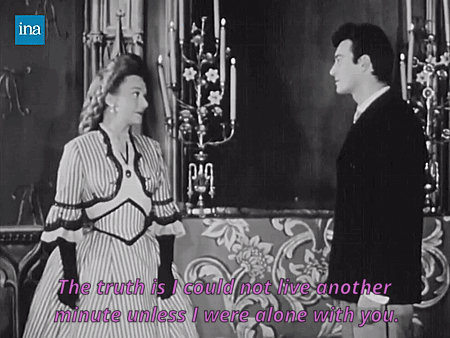


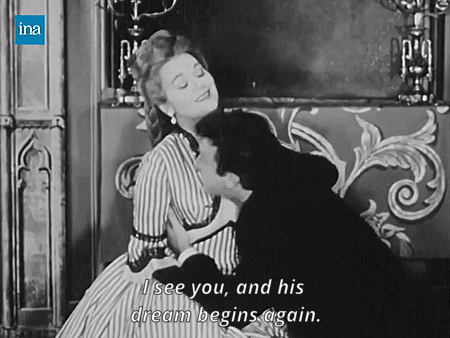
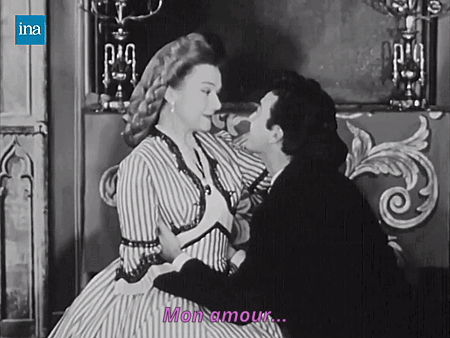
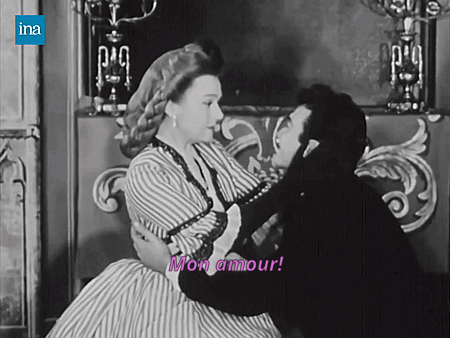
Edwige Feuillère and Gérard Barray as The Queen and Stanislas in the reprise of L'Aigle à deux têtes, Théâtre Sarah-Bernhardt, 1960.
#jean cocteau#Edwige Feuillère#gérard barray#théâtre français#french theatre#theatre#theater#vintage#love#passion#dark academia#retro#aesthetic#old hollywood#god imagine acting with her oml#the way she catches him in the second gif i--#it's so tender AGH I LOVE ITTTT#also the costumes in 1960 reprise were by#pierre balmain#losing my mind idc if 1960 was a flop#period drama#costume drama#noir et blanc#dreamy#pretty#lovecore#light academia#romantic academia#1960s#L'Aigle à deux têtes
101 notes
·
View notes
Text
Jackie Ormes: A Cartoonist Ahead of Her Time
“I have never liked dreamy little women who can't hold their own." –Jackie Ormes
Jackie Ormes is best known as a trail-blazing African-American cartoonist, but she was also a journalist and a civil rights activist. She created two extremely different comics that were seen in newspapers published expressly for African-American readers. Prior to World War II these readers followed the romances of adventuress Torchy Brown, but after the War, Miss Ormes’s single panel comic Patty-Jo ‘n’ Ginger provided biting social commentary through an outspoken six-year old named Patty-Jo.
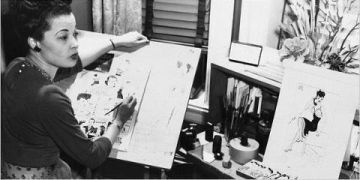
Jackie Ormes working on Torchy Brown sketches in her studio (c. 1950). Photographer unknown. Image source.
Jackie Ormes Gets Her Start
Jackie Ormes was “born on August 1, 1911, in Pittsburgh, Pennsylvania”(1) as Zelda Mavin Jackson. Her father, William Winfield Jackson ran a movie theater and had owned a printing company in Pittsburgh. After he was killed in an automobile accident in 1917, young Zelda and her sister went to live with an aunt and uncle. After her mother remarried, the girls moved with her and her new husband to Monongahela, outside of Pittsburgh.(1)
Throughout high school Jackie, an avid artist and cartoonist, became the arts editor for her high school year book.(1) Her correspondence with the editor of The Pittsburgh Courier, “a weekly African American newspaper that came out every Saturday”(2) led to her first assignment, as a proofreader. Jackie’s talent and hard work soon earned her reporting assignments covering everything from human interest stories to local boxing matches.(1)
In 1936, Jackie met and married businessman Earl Ormes.” Sadly, the couple “lost their only child, Jacqueline, to a brain aneurysm at age 3”(3).
Torchy Brown: “From Dixie to Harlem”
On May 1, 1937 The Pittsburgh Courier became the first newspaper to publish a comic strip written and drawn by a woman of color. (1) On that date Torchy Brown in “From Dixie to Harlem” first appeared in the paper. The strip followed the adventures “of a young country girl who moves from Mississippi to New York City in order to make it as a lounge singer at the famed Cotton Club”(2). While Torchy Brown was written with a humorous tone, the story line “mirrored the journey of many African-Americans who ventured northward during the Great Migration”(1).
The Torchy Brown series “was not syndicated in the usual sense” (1), The Pittsburgh Courier had over a dozen regional editions that were published in cities across the United States. In this way, Jackie’s work had exposure to millions of readers (3).
The Torchy Brown strip only ran for one year. No one knows exactly why the strip didn’t run longer, but there is some speculation that Ormes’s contract with The Courier had ended. Perhaps another reason was that Jackie’s husband, Earl had been offered a job in Chicago (4).
Jackie Ormes: “From Pittsburgh to Chicago”
In Chicago, Earl Ormes became a successful manager in the hotel business, first managing “the DuSable Hotel and later … the more upscale Sutherland Hotel”(4). Once settled in Chicago, Jackie was active in “the music, fashion and artistic communities of Chicago”(4). She had not, however, lost interest in her journalism. Based on her work at The Pittsburgh Courier, she persuaded the editor of one of Chicago’s African-American newspapers, The Chicago Defender to hire her (4).
In 1945, Jackie Ormes returned to cartooning with a one panel strip in The Defender called Candy. The strip “featured a curvaceously-drawn housemaid who wisecracked about her unseen employer and borrowed clothes from her boss’ wardrobe” (4). Unfortunately, Candy was also short-lived, running about four months from March to July (1), and then Ms. Ormes went back to special assignment work for the paper (3).

Jackie Ormes. Candy character (1945). Image source.
Patty-Jo ‘n’ Ginger
Later in 1945 Jackie Ormes, introduced her most successful and longest running comic Patty-Jo ‘n’ Ginger selling it to her old employer, The Pittsburgh Courier. The strip features the brash and outspoken six-year-old Patty-Jo and her silent sounding board older adult sister Ginger. “Despite her age, Patty-Jo has both a ‘smart mouth’ and keen insights into” (4) the racial situation in the United States during that time.

Jackie Ormes, Patty-Jo ‘n’ Ginger comic (1948). Image source.
The comic’s popularity led Ms. Ormes in 1947 to market a “Patty-Jo” doll. She “contracted with the Terri Lee doll company … to produce a play doll based on her little girl cartoon character” (1). The doll was popular with both black and white children (1).
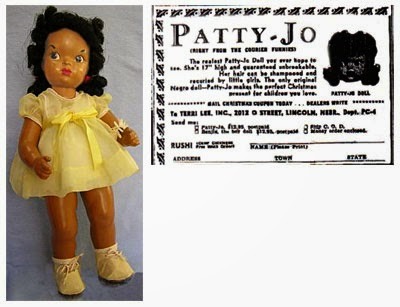
Jackie Ormes, Patty-Jo Doll with order form (1947). Image source.
The Return of Torchy Brown
In August 1950 The Pittsburgh Courier started publishing “an eight-page color comics insert” (1) which gave Ms. Ormes the opportunity to reprise her Torchy Brown character of 1937 in the strip Torchy in Heartbeats. The new Torchy strip also featured a Torchy paper doll with costumes that demonstrated Ms. Ormes’ talent as a fashion designer. Unlike the Torchy of the 1930s, the resurrected Torchy “was confident, intelligent, and brave” (1) unlike the usual stereotype of African American women at the time. Like Patty-Jo ‘n’ Ginger, Ms. Ormes used Torchy to spotlight controversial issues “everything from race to sex to environmental pollution” (1). During this time, Ms. Ormes support for civil rights and other leftist political issues subjected her to an investigation by the FBI during the McCarthy Era (1,2).
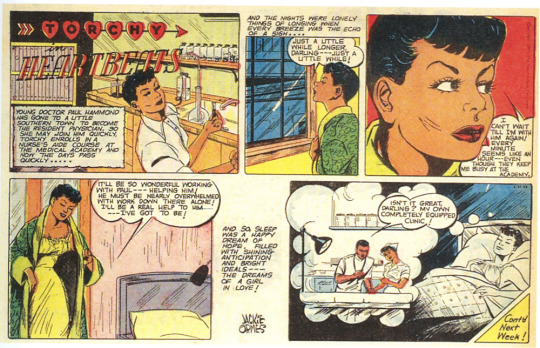
Jackie Ormes, Torchy in Heartbeats comic strip (1952). Image source.
Jackie Ormes Later Years
The last installment of Patty-Jo ‘n’ Ginger ran on September 22, 1956, and it has been speculated that “editorial changes within The Pittsburgh Courier (4)” led Ms. Ormes to retire from cartooning. Although her cartooning days were over, she continued to remain artistically active working on still life paintings, portraits, and murals until the mid-1960s when painful arthritis caused her to stop. She did continue to contribute to many Chicago non-profit organizations with volunteer work and fundraising efforts. One of her most prestigious positions was on the board of directors for the DuSable Museum of African American History. Ms. Ormes was also an avid doll collector with over 150 dolls in her collection. (1)
Jackie Ormes’s Legacy
In 1976 Jackie Ormes’s husband Earl died after forty years of marriage. (1) Ms. Ormes died in Chicago on the day after Christmas in 1985.(4) In 2007 Cheryl Lynn Eaton, writer and cartoonist, founded The Ormes Society, which promotes black female comics artists; the following year a biography of Ms. Ormes was written and published by Nancy Goldstein.(2) In 2014 Ms. Ormes was posthumously inducted into the National Association of Black Journalists Hall of Fame. On September 1, 2020, a Google Doodle commemorated Ms. Ormes and her work. (1) Filmmaker Susan Reib is currently working on a film based Miss Ormes’ life and her Torchy Brown comics.(5)
Through her artistic talent combined with courage and independence, Jackie Ormes was able to influence both the civil rights and womens’ rights movements in a way that no other artist could. Her work continues to inspire contemporary artists and activists.
References
Wikipedia, (10 September, 2020). Jackie Ormes. https://en.wikipedia.org/wiki/Jackie_Ormes
Women in Comics, (n.d.). Jackie Ormes. https://womenincomics.fandom.com/wiki/Jackie_Ormes
Pitts, V., (1 April, 2013). Zelda “Jackie” Ormes, (1911-1985). Blackpast.org web site. https://www.blackpast.org/african-american-history/ormes-zelda-jackie-1911-1985/
Letizia, A., (22 January, 2014). Jackie Ormes and African American Comic Strips. Geek Frontiers web site. https://geekfrontiers.com/pittsburgh-history/jackie-ormes-and-african-american-comic-strips
Reib, S. (n.d.), The Jackie Ormes/Torchy Brown Project. https://www.torchybrown.com/
Further Reading
Goldstein, Nancy (2008). Jackie Ormes: The First African American Woman Cartoonist. Ann Arbor: University of Michigan Press. ISBN 978-0-472-11624-9. OCLC 1176131351
23 notes
·
View notes
Text
THE BIG STREET
August 13, 1942
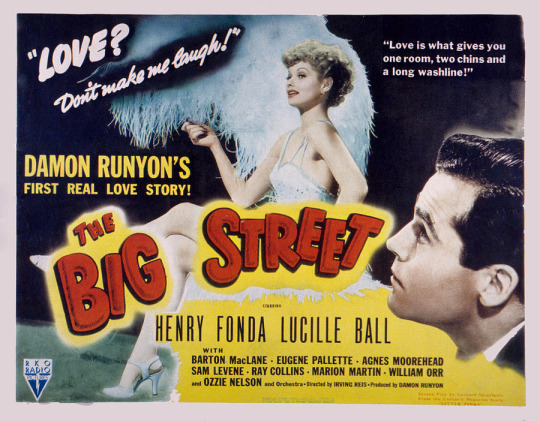
Producer: Damon Runyon
Director: Irving Reis
Screenplay: Leonard Spigelgass, based on the short story “Little Pinks” by Damon Runyon, first published in Collier’s magazine.
Dance Staging: Chester Hale
Gowns: Renie
Miss Ball’s Dancing Costume: Freddy Wittop
Miss Ball’s Make-Up: Perc Westmore
The film is sometimes referred to as Damon Runyon’s The Big Street.
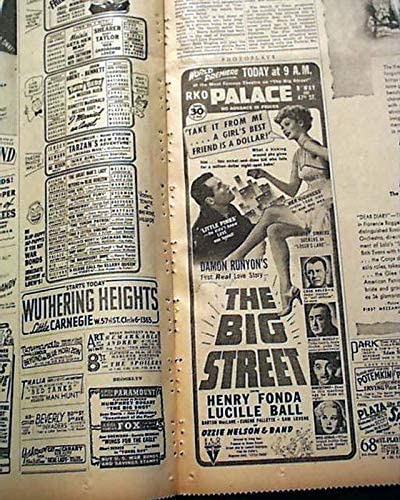
The film premiered in New York City at the RKO Palace on August 13, 1942. That same day Disney’s long-awaited Bambi opened at Radio City Music Hall. At the Capitol, Orson Welles’ The Magnificent Ambersons, also starring Agnes Moorehead and Gil Perkins, continued its run. Nearby, at the Albee, a second-run cinema, Top Hat (1935) starring Ginger Rogers and Lucille Ball was playing. The Big Street opened nationally September 4, 1942.
“Love is something that gets you one room, two chins, and three kids.” ~ Gloria Lyons (Lucille Ball)
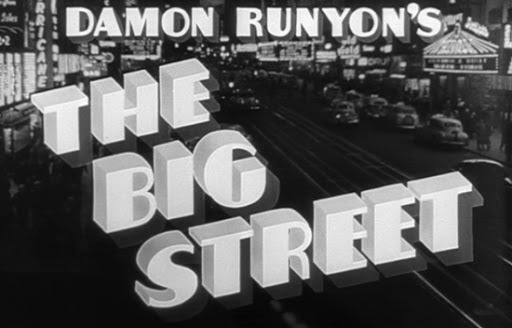
PRINCIPAL CAST
Lucille Ball (Gloria Lyons aka ‘Her Highness’) was born on August 6, 1911 in Jamestown, New York. She began her screen career in 1933 and was known in Hollywood as ‘Queen of the B’s’ due to her many appearances in ‘B’ movies. With Richard Denning, she starred in a radio program titled “My Favorite Husband” which eventually led to the creation of “I Love Lucy,” a television situation comedy in which she co-starred with her real-life husband, Latin bandleader Desi Arnaz. The program was phenomenally successful, allowing the couple to purchase what was once RKO Studios, re-naming it Desilu. When the show ended in 1960 (in an hour-long format known as “The Lucy-Desi Comedy Hour”) so did Lucy and Desi’s marriage. In 1962, hoping to keep Desilu financially solvent, Lucy returned to the sitcom format with “The Lucy Show,” which lasted six seasons. She followed that with a similar sitcom “Here’s Lucy” co-starring with her real-life children, Lucie and Desi Jr., as well as Gale Gordon, who had joined the cast of “The Lucy Show” during season two. Before her death in 1989, Lucy made one more attempt at a sitcom with “Life With Lucy,” also with Gordon.
Gloria’s singing voice was provided by Martha Mears, who also did Ball’s singing in DuBarry Was a Lady (1944).
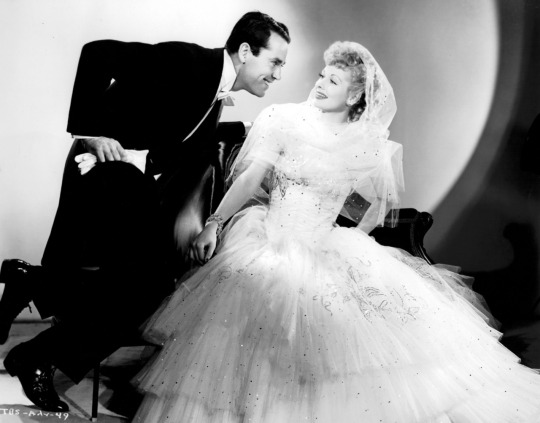
Henry Fonda (Augustus Pinkerton II aka ‘Little Pinks’) first worked with Lucille Ball in the 1935 film I Dream Too Much. When Lucille Ball first got to Hollywood, the two actually briefly dated. They collaborated on the TV special “The Good Years” (1962) and the film Yours, Mine and Ours (1968). During the 1970s, Fonda and Ball often turned up on the same awards and tribute shows. Fonda was nominated for three Oscars, winning in 1982 for On Golden Pond. He also won an honorary Oscar in 1981. Fonda died in 1982 at age 77.
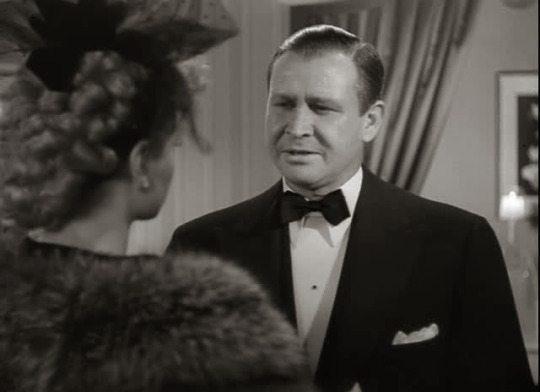
Barton MacLane (Case Ables) was seen in the film The Maltese Falcon (1941) but is probably best remembered for his final role, the blustery General Peterson on “I Dream of Jeannie” (1965-69).
“A fat man’s always listening to love stories, but he’s never go any to tell.” ~ Nicely Nicely Johnson
Eugene Pallette (Nicely Nicely Johnson, The Greatest Eater Alive) was seen as Friar Tuck in Robin Hood (1938) and in Mr. Smith Goes To Washington (1939).
The character of Nicely Nicely Johnson was played by Stubby Kaye, who reprised the role he played on Broadway, in the film version of Runyon’s Guys and Dolls (1955). He was so named because his usual reply to the question “How are you doing?” was typically “Nicely nicely, thank you!”
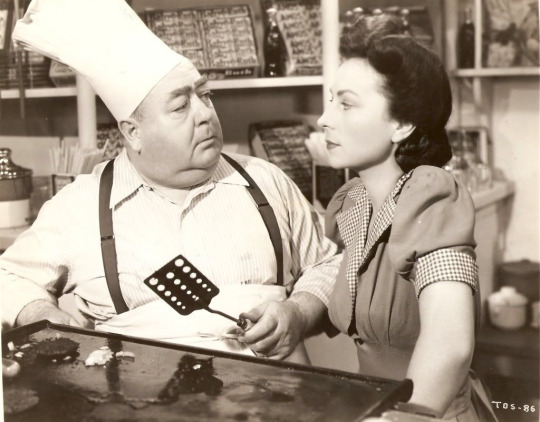
Agnes Moorehead (Violette Shumberg) was a classically trained performer who collaborated with Orson Welles on Citizen Kane (1941) and The Magnificent Ambersons (1942). She is best remembered as Samantha’s exotic mother Endora on the TV series “Bewitched” (1964-72).
Violette weighs 100 pounds, four ounces.
“She has a very large capacity for groceries.” ~ Pinks (about Violette)

Sam Levene (Horsethief) originated the role of Nathan Detroit in the Broadway stage musical of Runyon’s Guys and Dolls. Singing great Frank Sinatra played Nathan Detroit in the movie version in 1955.
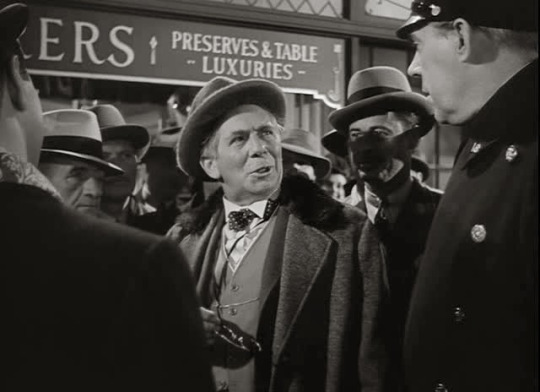
Ray Collins (Professor B) also collaborated with Orson Welles on Citizen Kane (1941) and The Magnificent Ambersons (1942), along with Agnes Moorehead. He is best remembered for playing Lieutenant Tragg on “Perry Mason” from 1957 to 1965.

Marion Martin (Mimi Venus) would also be seen with Lucille Ball in Abbott and Costello in Hollywood (1945). Although she was often cast as a brassy stripper, showgirl or tough gun moll, off screen she was known to be extremely shy and retiring.
“That dame is a lump of mud!” ~Gloria (about Mimi)

William Orr (Decatur Reed) was an actor turned executive. As the head of WB Television for nine years, he was executive producer of the studio's early forays into the medium, helping to put ABC on the prime-time map with a steady staple of westerns and detective shows. In 1959 he received a Golden Globe for his contributions to television.

Vera Gordon (Mrs. Lefkowitz) emigrated with her family from Russia when she was seven years old. She became involved in the theatre and was active in silent films and early talkies. She had previously appeared with Lucille Ball in 1938′s Having Wonderful Time.

George Cleveland (Col. Venus) makes his fourth film appearance with Lucille Ball. In 1949 they also did Miss Grant Takes Richmond. He is best remembered for playing Gramps on “Lassie” (1954-57).

Ozzie Nelson (Himself) was considered the pre-eminent TV dad of the 1950s thanks to his successful family sitcom “The Adventures of Ozzie and Harriet” (1952-66). Before TV fame, he was a bandleader with his wife Harriet the lead singer. Nelson later appeared on several talk shows with Lucille Ball.
UNCREDITED CAST (with connections to Lucille Ball)
Baby (Gloria’s Pekingese Dog)

Louise Beavers (Ruby, Gloria’s Maid) went on to appear in three more films with Lucille Ball: DuBarry Was a Lady (1943), Lover Come Back (1946), and The Facts of Life (1960).
Charles Cane (McCarty, Holland Tunnel Policeman) also appeared with Lucille Ball in The Dark Corner (1946) and as one of the theatre patrons at “Over The Teacups” in “Ethel’s Birthday” (1954) which also featured Big Street extras Bess Flowers, James Conaty, Sam Harris, and Harold Miller.
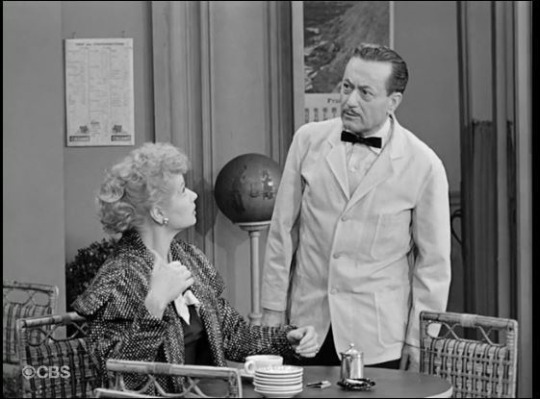
Jack Chefe was seen as a Paris waiter in “Lucy Meets Charles Boyer” (ILL S5;E19) and played a bellhop in “Lucy and John Wayne” (ILL S5;E2) and had also appeared in five films with Lucille Ball, including playing a waiter in Forever, Darling. Of Chefe’s 358 film roles, 165 were waiters!
James Conaty (Nightclub Patron) was also seen with Lucille in I Dreamed Too Much (1935), Lured (1947), and The Long Long Trailer (1953). He was one of the theatre patrons at “Over The Teacups” in “Ethel’s Birthday” (1954) which also featured Big Street extras Bess Flowers, Charles Cane, Sam Harris, and Harold Miller.
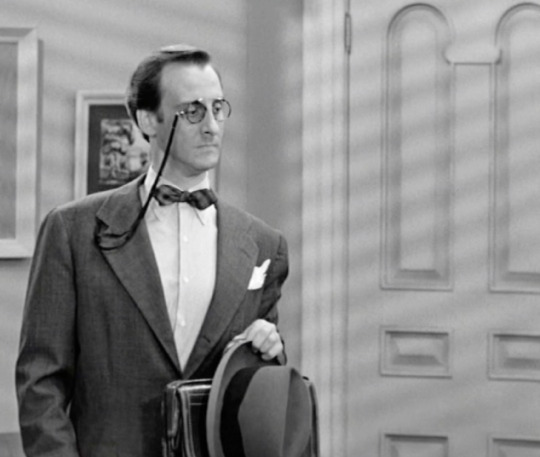
Hans Conried (Waiter) played Harry Martin in “Redecorating” (ILL S2;E8) and Percy Livermore in “Lucy Hires an English Tutor” (ILL S2;E13), both in 1952. He also did two episodes of “The Lucy Show,” both as her music tutor Dr. Gitterman in 1963.
Pedro de Cordoba (Doctor) was also seen with Lucille Ball in Five Came Back (1939).

Helen Dickson (Florida Club Patron) had appeared with Lucille Ball in Carnival (1935) and Two Smart People (1946). She was one of the aging flapper showgirls in “Ricky Loses His Voice” (ILL S2;E9) in 1952.
Jimmy Dime (Truck Driver / Stunts) was seen with Lucille Ball in 1951′s The Magic Carpet. He did a half dozen episodes as a background players on Desilu’s “The Untouchables” (1959-61).
Eddie Dunn (Mulvaney) was also part of Ziegfeld Follies (1945) featuring Lucille Ball.
Jay Eaton (Late Night New York Nightclub Patron) did a total of nine films with Lucille Ball between 1934 and 1949, including her other Damon Runyon film Sorrowful Jones (1949).

Bess Flowers (Florida Nightclub Patron) aka 'Queen of the Extras’ made numerous uncredited background appearances on both “I Love Lucy” and “The Lucy Show.” She holds the record of the most film collaborations with Lucille Ball: 17.
Karen X. Gaylord (Florida Club Patron) was also part of Ziegfeld Follies (1945) featuring Lucille Ball.
Charlie Hall (Caviar Waiter) also did Kid Millions with Lucille Ball and went on to do four more films with her until 1942.
William Halligan (Detective) was also with Lucille Ball in 1940′s You Can’t Fool Your Wife.
Art Hamburger (Joe Duffle, Eating Contest Opponent) makes his final of three screen appearances. He became an associate director. This is his only time working with Lucille Ball.
Joe Duffle is from Boston and weighs 337 and a half pounds. There is some irony that Nicely Nicely (then Violette’s) eating contest opponent is actually named Hamburger.
Mary Halsey (Showgirl) also did Seven Days Leave with Lucille Ball in 1942.
Sam Harris (Passerby on Florida Boardwalk) was in the background of a dozen Lucille Ball films, as well as being seen on “I Love Lucy,” “The Lucy-Desi Comedy Hour” and “The Lucy Show.” He was one of the theatre patrons at “Over The Teacups” in “Ethel’s Birthday” (1954) which also featured Big Street extras Bess Flowers, Charles Cane, James Conaty, and Harold Miller.
Jack Herrick (Mindy’s Customer) was also seen with Lucille Ball in The Bowery (1933).
John Indrisano (Mug at Mindy's) was also seen with Lucille Ball in The Facts of Life (1960).
Tiny Jones (Small Friendly Neighbor) was seen with Lucille Ball in A Girl, A Guy, and a Gob (1934) and Five Came Back (1939).
Donald Kerr (Pete the Passer) appeared in eight films with Lucille Ball between 1936 and 1954.
Wilbur Mack (Florida Club Patron) appeared in three more films with Lucille Ball: Thousands Cheer (1943), Ziegfeld Follies (1945), and Lured (1947).
George Magrill (Mug at Mindy's / Stunts) appeared with Lucille Ball in ten films between 1933 and 1949.
Richard Martin also did Seven Days Leave with Lucille Ball in 1942
Tony Merlo (Mug at Mindy's) was also seen with Lucille Ball in Dance, Girl, Dance (1940) and Broadway Bill (1934).
John ‘Skins’ Miller (Truck Driver) was also with Lucille Ball in Fancy Pants (1950) and Sorrowful Jones (1949).
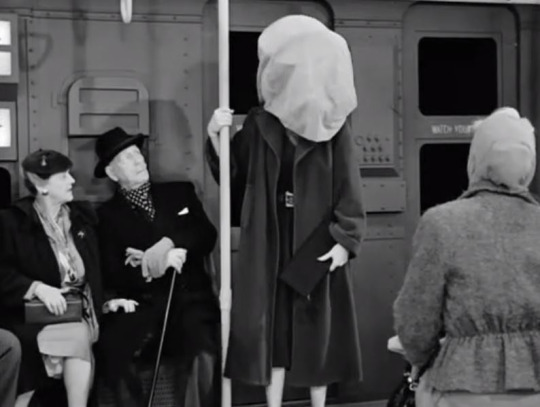
Harold Miller (Florida Club Patron) shares 13 film credits with Lucille Ball. He was one of the theatre patrons at “Over The Teacups” in “Ethel’s Birthday” (1954) which also featured Big Street extras Bess Flowers, Charles Cane, James Conaty, and Harold Miller. Harris would return for “Lucy and the Loving Cup” (S6;E12) as a subway strap hanger. He appeared in six episodes of “The Lucy Show,” the last one being as a party guest on “My Fair Lucy” (1965).
Bert Moorhouse (Florida Club Waiter) did nine films with Lucille Ball from 1933 to 1954.
Frank Moran (Mug at Mindy’s) makes his final of five film appearances with Lucille Ball.
George Noisome (Newsboy) also appeared with Lucille Ball in That’s Right, You’re Wrong (1939).
Barry Norton (Florida Club Patron) was also seen with Lucille Ball in Nana (1934) and Dance, Girl, Dance (1940).
Frank O’Connor (Police Captain at Holland Tunnel) did nine films with Lucille Ball from 1933 to 1946.

Gil Perkins (Mug / Stunts) was aboard the train when Lucy and Ricky headed home from California in “The Great Train Robbery” (ILL S5;E5). He was seen in The Fuller Brush Girl (1950) with Lucille Ball. He made one appearance on “Here’s Lucy” (above right) in 1970.
Bob Perry (Toupee, Associate of Ables / Stunts) was also seen with Lucille Ball in Stage Door (1937) and Joy of Living (1938).
Ralph Peters (Florist) was also with Lucille Ball in Sorrowful Jones (1949).
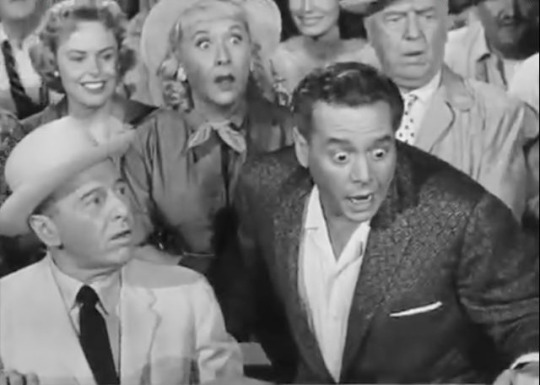
Addison Richards (Dr. Mitchell) played the American Consul in “Lucy Goes To Mexico” (LDCH 1959) as well as three other films with Lucille Ball.
Dewey Robinson (Truck Driver) did five other films with Lucille Ball.
Shimen Ruskin (Waiter Captain at Florida Club) was previously seen with Lucille Ball in Having Wonderful Time (1938) but is best remembered as Mordcha in the film Fiddler on the Roof (1971).
Hector V. Sarno (Friendly Neighbor) was also with Lucille Ball in Muss ‘em Up (1936).

Harry Shannon (Florida Doctor) was seen with Lucille Ball and Desi Arnaz in Too Many Girls (1940). He played Jim White (above center), photographer in “Men Are Messy” (ILL S1;E8) in 1951. He is probably best remembered as the father of Rose (Rosalind Russell) in Gypsy (1962).
Walter Soderling (Doctor at Mindy’s) was with Lucille Ball in Easy To Wed (1946).
Mary Stuart (Showgirl) was also seen with Lucille Ball in Seven Days Leave (1942). She is best remembered for her four decade run as Mary on “Search for Tomorrow”.
Elliott Sullivan (Tramp) was also in That’s Right, You’re Wrong (1939) and Next Time I Marry (1938) with Lucille Ball.
Harry Wilson (Fethington) did four other films with Lucille Ball between 1934 and 1950. He was also an extra on Desilu’s “Untouchables” (1959-62).
Marie Windsor (Florida Club Patron) was also in Critic’s Choice (1963) with Lucille Ball.
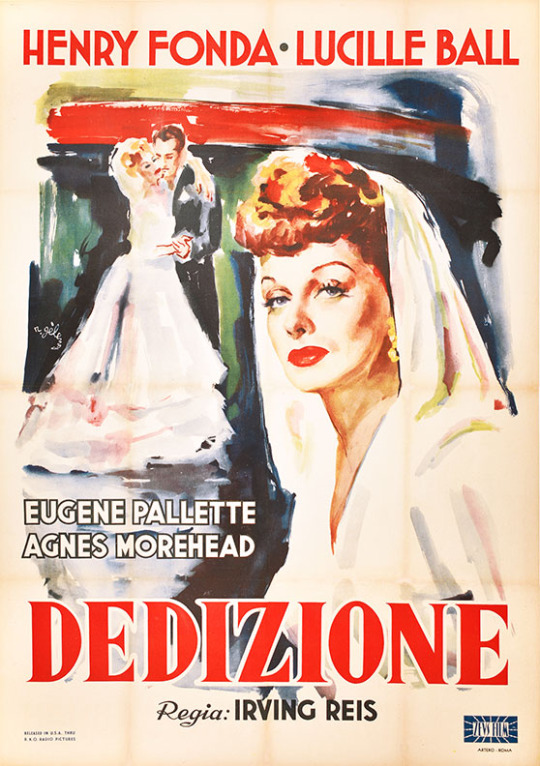
BIG STREET OPENING
"Loser's Lane - the sidewalk in front of Mindy's Restaurant on Broadway - is not as high-toned a trading center as Wall Street, but the brokers are a lot more colorful. Generally they prefer to put their money on a prizefight or horse race, but when the action slows, anything can happen and it usually does. Tonight, for example, the citizens of the Lane are discussing the latest contest in their usual quiet way..."
BIG STREET TRIVIA
The Big Street was a nickname for Broadway, where this movie's plot starts, and where all Runyon's stories take place. The film opens at West 50th and Broadway in New York City, with the marquee of the Capitol Theatre in the background.

Damon Runyon originally wanted to cast Charles Laughton and Carole Lombard in the lead roles, but neither one was interested in the project. The two had previously paired on White Women (1933) and They Knew What They Wanted (1940), Lombard suggested the producer consider her friend Lucille Ball and, despite pressure by RKO to hire a better-known actress, Runyon offered her the role. Unaccustomed to playing series roles, Lucille asked advice from Laughton on how to approach such a difficult part. Laughton told her not to hold back: “If you are going to play a bitch, play a bitch!”
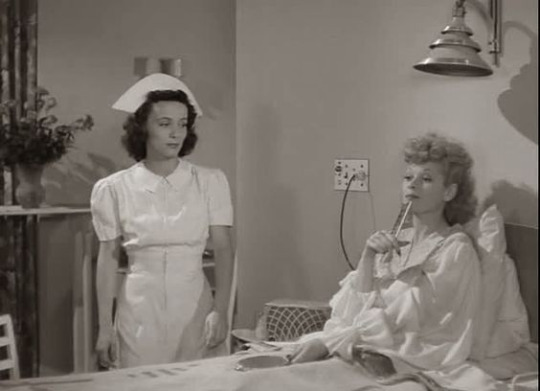
Ball later recalled that at the time she was cast, "nothing much seemed to be happening for me at the studio. My $1000 weekly paycheck came regularly, but I was still a regular among the Bs."
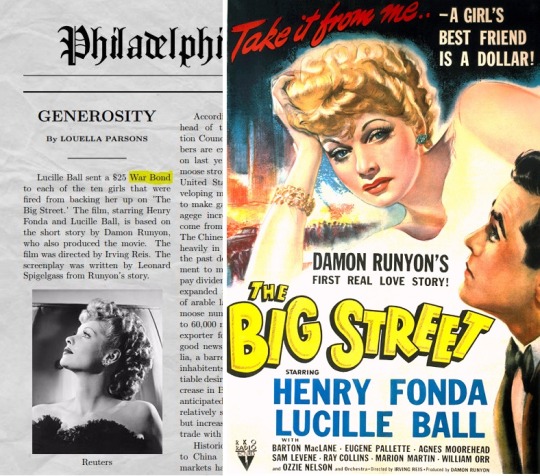
Philadelphia Daily News ~ June 6, 1942
Reports that Lucille Ball sent a $25 War Bond to each of the ten girls that were fired from backing her up on “The Big Street”.
During filming, Lucy’s new husband Desi Arnaz felt so insecure about leaving Lucy and Fonda alone together that he’d often pop by the set to keep an eye on them. His paranoia so exasperated director Irving Reis that he finally banned him from the set.
This was Lucille Ball’s favorite of her nearly 80 films. She felt her performance was unjustly ignored by the Academy.

The vocals for "Who Knows?" by Harry Revel and Mort Greene, performed by Gloria in Case's Manhattan club, were provided by Martha Mears. The character later reprises the song with Ozzie Nelson and his orchestra in the Miami nightspot.
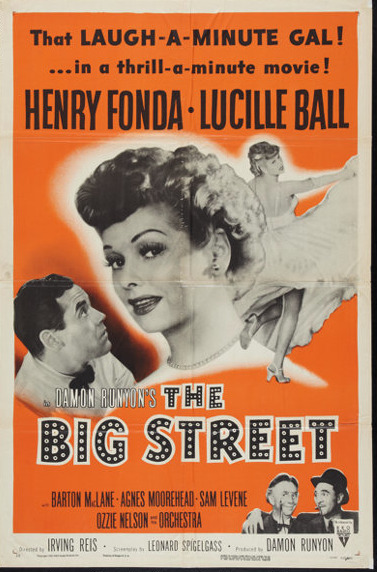
The film was re-released in 1955, at the height of Lucille Ball’s television success. Although Fonda remains first billed, Ball’s photo clearly indicates that she is the drawing card.
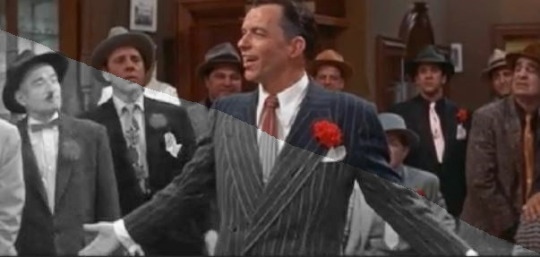
Damon Runyon also created the source material for the hit Broadway musical Guys and Dolls (1950), which starred Robert Alda, who went on to make several appearances on “The Lucy Show.” The two stories share the character of Nicely Nicely Johnson. When the film version was made by MGM in 1955, Lucy and Desi were also under contract to the studio. A brief clip of the film was inserted into the middle of an episode of “I Love Lucy” called “Lucy and the Dummy” (S5;E3), although the clip was removed after its initial airing. Further, when Lucille Ball first came to Hollywood, before becoming a contract player at RKO, she worked for Sam Goldwyn as one of the Goldwyn Girls. In Guys and Dolls, the Hot Box Girls are played by the Goldwyn Girls.
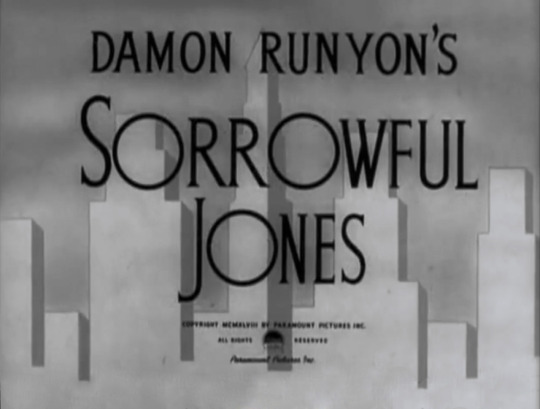
In 1949, Lucille Ball starred in another film based on a Damon Runyon story, Sorrowful Jones, a remake of the 1934 Shirley Temple film, Little Miss Marker.

Damon Runyon was a big fan of Lindy’s, a Manhattan restaurant famous for their cheesecake, and wrote the eatery into his books as Mindy's. The musical Guys and Dolls, based on Runyon's writings, immortalizes Lindy's in one of its songs. In “Ricky’s Contract” (ILL S4;E10), Lucy tells Fred and Ethel that Ricky took his entire band to Lindy’s to celebrate learning that he had been offered a movie contract.
In The Big Street, a sympathetic Pinks decides to take Gloria to Florida to recuperate - by pushing her wheelchair the entire way - starting with the Holland Tunnel! Although Lucy and Fonda never left Hollywood, the locations are achieved by rear projection and establishing footage.

The Holland Tunnel figures into “I Love Lucy,” not once - but twice. In “The Marriage License” (ILL S ), after finding out that her marriage license may be invalid, Lucy goes on a twelve hour walk to East Orange, New Jersey. “How I ever got through the Holland Tunnel, I don’t know.”

The Holland Tunnel will be mentioned again three years later in “Lucy Learns to Drive” (ILL S4;E11). Reportedly, she tried to make a u-turn in the Holland Tunnel resulting in traffic being tied up to East Orange, New Jersey.

Action is also set in Miami Beach, Florida. Pinks and Gloria hitchhike there to visit with Nicely Nicely and Violette who are operating a night spot there.
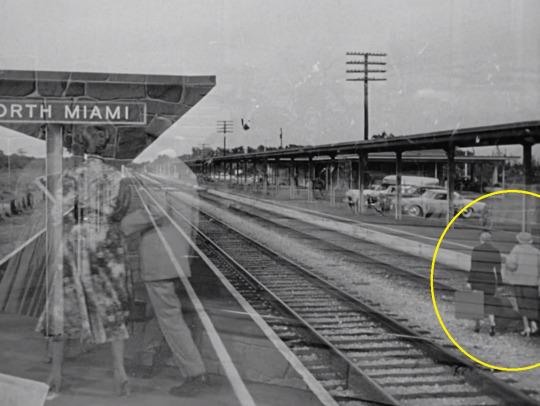
In “Off To Florida” (ILL S6;E6), Lucy and Ethel also hitchhike to Miami Beach Florida after being left on the side of the road by their ride share, a suspected hatchet murderess. They arrive at the North Miami train station covered in chicken feathers from riding in the back of a poultry truck.
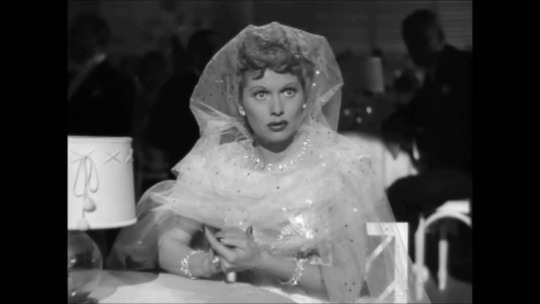
Doting Pinks has a pet name for haughty Gloria: 'Your Highness'. In Florida, her friends conspire to get people to come and hear her sing by fibbing that she is the Princess of Corolia, a fictional place.

In “The Publicity Agent” (ILL S1;E31), Lucy conspires to get Ricky more publicity by pretending to be a fawning fan of royal blood: ‘The Maharincess of Franistan’!
FAST FORWARD!
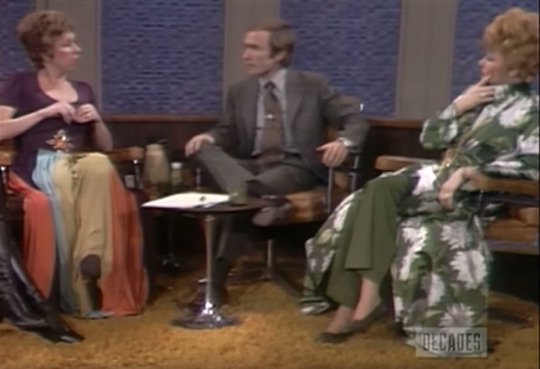
On a 1971 episode of “The Dick Cavett Show" with guests Lucille Ball, Carol Burnett, and Lucie Arnaz, Lucie compliments her mother's dramatic performance in the film.
The film is referenced in the television film Lucy & Desi: Before the Laughter (1991)
A poster for the film is on Lucy’s dressing room wall in Lucy, a 2003 TV movie.
The Big Street turns up in the TV listings in the low budget film Hollywood Mouth (2008) starring Joe Bologna.
A clip from the film is featured in a montage during “AFI Life Achievement Award: A Tribute to Henry Fonda” a 1978 special attended by Lucille Ball.
Henry Fonda: The Man and His Movies (1982) contains dressing room and dance floor scenes with Lucille Ball.
The Emmy-winning documentary Lucy and Desi: A Home Movie (1993) features a brief clip from the movie.
When Cher is TCM Guest Programmer in 2011, she selects The Big Street as one of her films to be aired.

In December 1948, Lucille Ball reprised her role on radio with John Garfield taking the role of Pinks.
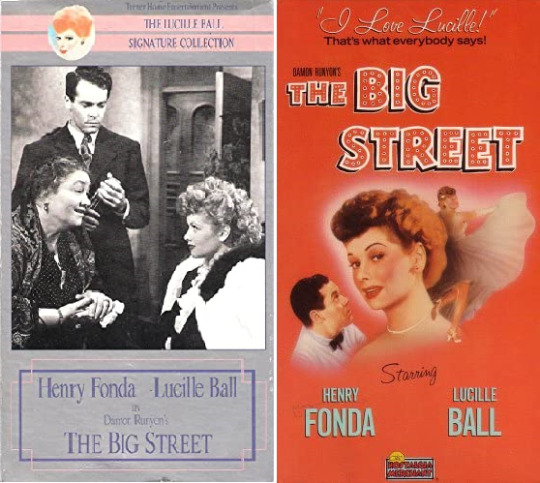
The Big Street on VHS.
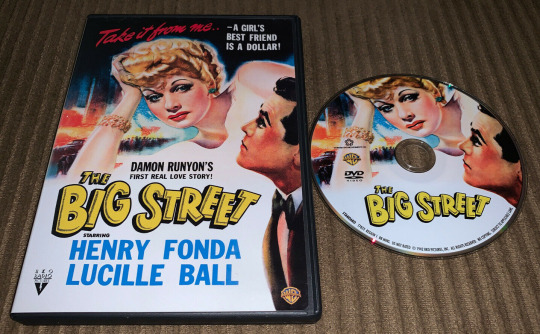
The Big Street is available on DVD from Warner Home Video. It is also part of the Lucille Ball Collection DVD, which also includes Dance, Girl, Dance, DuBarry Was A Lady, Critic’s Choice, and Mame.

14 notes
·
View notes
Text

Myrna Loy (born Myrna Adele Williams; August 2, 1905 – December 14, 1993) was an American film, television and stage actress. Trained as a dancer, Loy devoted herself fully to an acting career following a few minor roles in silent films. She was originally typecast in exotic roles, often as a vamp or a woman of Asian descent, but her career prospects improved greatly following her portrayal of Nora Charles in The Thin Man (1934).
Born in Helena, Montana, Loy was raised in rural Radersburg during her early childhood, before relocating to Los Angeles with her mother in her early adolescence. There, she began studying dance, and trained extensively throughout her high school education. She was discovered by production designer Natacha Rambova, who helped facilitate film auditions for her, and she began obtaining small roles in the late 1920s, mainly portraying vamps. Her role in The Thin Man helped elevate her reputation as a versatile actress, and she reprised the role of Nora Charles five more times.
Loy's career began to slow in the 1940s, and she appeared in only a few films in the 1950s, including a lead role in the comedy Cheaper by the Dozen (1950), as well as supporting parts in The Ambassador's Daughter (1956) and the drama Lonelyhearts (1958). She appeared in only eight films between 1960 and 1981, after which she retired from acting.
Although Loy was never nominated for an Academy Award, in March 1991 she received an Honorary Academy Award in recognition of her life's work both onscreen and off, including serving as assistant to the director of military and naval welfare for the Red Cross during World War II, and a member-at-large of the U.S. Commission to UNESCO. Loy died in December 1993 in New York City, aged 88.
Loy was born Myrna Adele Williams on August 2, 1905, in Helena, Montana, the daughter of Adelle Mae ( Johnson) and rancher David Franklin Williams. Her parents had married in Helena in 1904, one year before Loy was born. She had one younger brother, David Frederick Williams (d. 1982). Loy's paternal grandfather, David Thomas Williams, was Welsh, and emigrated from Liverpool, England to the United States in 1856, arriving in Philadelphia. Unable to read or write in English, he later settled in the Montana Territory where he began a career as a rancher. Loy's maternal grandparents were Scottish and Swedish immigrants. During her childhood, her father worked as a banker, real estate developer, and farmland appraiser in Helena, and was the youngest man ever elected to serve in the Montana state legislature. Her mother had studied music at the American Conservatory of Music in Chicago, and at one time considered a career as a concert performer, but instead devoted her time to raising Loy and her brother. Loy's mother was a lifelong Democrat, while her father was a staunch Republican. She was raised in the Methodist faith.
Loy spent her early life in Radersburg, Montana, a rural mining community approximately 50 miles (80 km) southeast of Helena. During the winter of 1912, Loy's mother nearly died from pneumonia, and her father sent his wife and daughter to La Jolla, California. Loy's mother saw great potential in Southern California, and during one of her husband's visits, she encouraged him to purchase real estate there. Among the properties he bought was land that he would later sell, at a considerable profit, to filmmaker Charlie Chaplin for his film studio there. Although her mother tried to persuade her husband to move to California permanently, he preferred ranch life and the three eventually returned to Montana. Soon afterward, Loy's mother needed a hysterectomy and insisted Los Angeles was a safer place to have it done, so she, Loy, and Loy's brother David moved to Ocean Park, where Loy began to take dancing lessons. After the family returned to Montana, Loy continued her dancing lessons, and at the age of 12, Myrna Williams made her stage debut performing a dance she had choreographed based on "The Blue Bird" from the Rose Dream operetta at Helena's Marlow Theater.
When Loy was 12, her father died during the 1918 flu pandemic in November of that year. Loy's mother permanently relocated the family to California, where they settled in Culver City, outside Los Angeles. Loy attended the exclusive Westlake School for Girls while continuing to study dance in downtown Los Angeles. When her teachers objected to her extracurricular participation in theatrical arts, her mother enrolled her in Venice High School, and at 15, she began appearing in local stage productions.
In 1921, Loy posed for Venice High School sculpture teacher Harry Fielding Winebrenner as "Inspiration"; the full length figure was central in his allegorical sculpture group Fountain of Education. Completed in 1922, the sculpture group was installed in front of the campus outdoor pool in May 1923 where it stood for decades. Loy's slender figure with her uplifted face and one arm extending skyward presented a "vision of purity, grace, youthful vigor, and aspiration" that was singled out in a Los Angeles Times story that included a photo of the "Inspiration" figure along with the model's name—the first time her name appeared in a newspaper. A few months later, Loy's "Inspiration" figure was temporarily removed from the sculpture group and transported aboard the battleship Nevada for a Memorial Day pageant in which "Miss Myrna Williams" participated. Fountain of Education can be seen in the opening scenes of the 1978 film Grease. After decades of exposure to the elements and vandalism, the original concrete statue was removed from display in 2002, and replaced in 2010 by a bronze duplicate paid for through an alumni-led fundraising campaign.
Loy left school at the age of 18 to begin to help with the family's finances. She obtained work at Grauman's Egyptian Theatre, where she performed in what were called prologues, elaborate musical sequences that were related to and served as preliminary entertainment before the feature film. During this period, Loy saw Eleonora Duse in the play Thy Will Be Done, and the simple acting techniques she employed made such an impact on Loy that she tried to emulate them throughout her career.
While Loy was dancing in prologues at the Grauman's Egyptian Theatre, portrait photographer Henry Waxman took several pictures of her that were noticed by Rudolph Valentino when the actor went to Waxman's studio for a sitting. Valentino was looking for a leading lady for Cobra, the first independent project he and his wife Natacha Rambova were producing. Loy tested for the role, which went to Gertrude Olmstead instead, but soon after she was hired as an extra for Pretty Ladies (1925), in which she and fellow newcomer Joan Crawford were among a bevy of chorus girls dangling from an elaborate chandelier.
Rambova hired Loy for a small but showy role opposite Nita Naldi in What Price Beauty?, a film she was producing. Shot in May 1925, the film remained unreleased for three years; but stills of Loy in her exotic makeup and costume appeared in Motion Picture magazine and led to a contract with Warner Bros. There, her surname was changed from Williams to Loy.
Loy's silent film roles were mainly as a vamp or femme fatale, and she frequently portrayed characters of Asian or Eurasian background in films such as Across the Pacific (1926), A Girl in Every Port (1928), The Crimson City (1928), The Black Watch (1929), and The Desert Song (1929), which she later recalled "kind of solidified my exotic non-American image." In 1930 she appeared in The Great Divide. It took years for her to overcome this stereotype, and as late as 1932, she was cast as a villainous Eurasian in Thirteen Women (1932). She also played, opposite Boris Karloff, the depraved sadistic daughter of the title character in The Mask of Fu Manchu (1932).
In 1932, Loy began dating producer Arthur Hornblow Jr., when he was still married to his wife, Juliette Crosby. Prior to that, Loy appeared in small roles in The Jazz Singer and a number of early lavish Technicolor musicals, including The Show of Shows, The Bride of the Regiment, and Under a Texas Moon. As a result, she became associated with musical roles, and when they began to lose favor with the public, her career went into a slump. In 1934, Loy appeared in Manhattan Melodrama with Clark Gable and William Powell. When gangster John Dillinger was shot to death after leaving a screening of the film at the Biograph Theater in Chicago, the film received widespread publicity, with some newspapers reporting that Loy had been Dillinger's favorite actress.
After appearing with Ramón Novarro in The Barbarian (1933), Loy was cast as Nora Charles in the 1934 film The Thin Man. Director W. S. Van Dyke chose Loy after he detected a wit and sense of humor that her previous films had not revealed. At a Hollywood party, he pushed her into a swimming pool to test her reaction, and felt that her aplomb in handling the situation was exactly what he envisioned for Nora. Louis B. Mayer at first refused to allow Loy to play the part because he felt she was a dramatic actress, but Van Dyke insisted. Mayer finally relented on the condition that filming be completed within three weeks, as Loy was committed to start filming Stamboul Quest. The Thin Man became one of the year's biggest hits, and was nominated for the Academy Award for Best Picture. Loy received excellent reviews and was acclaimed for her comedic skills. Her costar William Powell and she proved to be a popular screen couple and appeared in 14 films together, one of the most prolific pairings in Hollywood history. Loy later referred to The Thin Man as the film "that finally made me ... after more than 80 films."
Her successes in Manhattan Melodrama and The Thin Man marked a turning point in her career, and she was cast in more important pictures. Such films as Wife vs. Secretary (1936) with Clark Gable and Jean Harlow, and Petticoat Fever (1936) with Robert Montgomery gave her opportunity to develop comedic skills. She made four films in close succession with William Powell: Libeled Lady (1936), which also starred Jean Harlow and Spencer Tracy; The Great Ziegfeld (1936), in which she played Billie Burke opposite Powell's Florenz Ziegfeld; the second Thin Man film, After the Thin Man (1936), with Powell and James Stewart; and the romantic comedy Double Wedding (1937). Loy married Arthur Hornblow in 1936 in-between filming the successive productions. She was later rumored to have had affairs with co-star Tracy between 1935 and 1936 while filming Whipsaw and Libeled Lady.
She also made three more films with Gable at Metro-Goldwyn-Mayer (MGM): Parnell (1937) was a historical drama and one of the most poorly received films of either Loy's or Gable's career, but their other pairings in Test Pilot and Too Hot to Handle (both 1938) were successes. While working for MGM, Loy was outspoken about the studio's casting hierarchy, especially based on race, and was quoted as saying: "Why does every black person in the movies have to play a servant? How about a black person walking up the steps of a court house carrying a briefcase?"
During this period, Loy was one of Hollywood's busiest and highest-paid actresses, and in 1937 and 1938, she was listed in the annual "Quigley Poll of the Top Ten Money Making Stars," which was compiled from the votes of movie exhibitors throughout the United States for the stars who had generated the most revenue in their theaters over the previous year.
By the late 1930s, Loy was highly regarded for her performances in romantic comedies, and she was anxious to demonstrate her dramatic ability. She was cast in the lead female role in The Rains Came (1939) opposite Tyrone Power. She filmed Third Finger, Left Hand (1940) with Melvyn Douglas and appeared in I Love You Again (1940), Love Crazy (1941), and Shadow of the Thin Man (1941), all with William Powell.
On June 1, 1942, Loy divorced husband Hornblow in Reno, citing "mental cruelty" as the impetus for separating.[46] Five days after the divorce, she married John D. Hertz, Jr. an advertising executive and founder of Hertz Rent A Car, at his sister's home in New York City.[46] They remained married for two years, eventually divorcing in Cuernavaca, Mexico, on August 21, 1944, with Loy again citing mental cruelty.
With the outbreak of World War II the same year, Loy all but abandoned her acting career to focus on the war effort and began devoting her time working with the Red Cross.[48] She was so fiercely outspoken against Adolf Hitler that her name appeared on his blacklist, resulting in her films being banned in Germany.[49] She also helped run a Naval Auxiliary canteen and toured frequently to raise funds for the war efforts. Around 1945, Loy began dating producer and screenwriter Gene Markey, who had previously been married to actresses Joan Bennett and Hedy Lamarr.[46] The two were married in a private ceremony on January 3, 1946, at the chapel on Terminal Island, while Markey was serving in the military.
She returned to films with The Thin Man Goes Home (1945). In 1946, she played the wife of returning serviceman Fredric March in The Best Years of Our Lives (1946). Loy was paired with Cary Grant in David O. Selznick's The Bachelor and the Bobby-Soxer (1947). The film co-starred a teenaged Shirley Temple. Following its success, she appeared again with Grant in Mr. Blandings Builds His Dream House (1948).
In 1950, Loy co-starred with Clifton Webb in Cheaper by the Dozen (1950), which was a box-office hit, grossing $4.4 million in the United States. The same year, she divorced Markey. Her fourth and final husband was Howland H. Sargeant, U.S. Assistant Secretary of State for Public Affairs and president of Radio Liberty, whom she married on June 2, 1951, in Fort Myer, Virginia. Sargeant, a Presbyterian, wanted the marriage officiated in the church, but they were unable to do so due to Loy's recent divorce.
Throughout the 1950s, Loy assumed an influential role as co-chairman of the Advisory Council of the National Committee Against Discrimination in Housing. In 1948, she had become a member of the U.S. National Commission for UNESCO, the first Hollywood celebrity to do so. In 1952, she starred in the Cheaper by the Dozen sequel, Belles on Their Toes. In 1956, she appeared in The Ambassador's Daughter along with John Forsythe and Olivia de Havilland. She played opposite Montgomery Clift and Robert Ryan in Lonelyhearts (1958), Dore Schary's adaptation of Nathanael West's classic 1933 novel Miss Lonelyhearts. In 1960, she appeared in Midnight Lace and From the Terrace, but was not in another film until 1969 in The April Fools. In 1965, Loy won the Sarah Siddons Award for her work in Chicago theatre. Loy, a lifelong Democrat, publicly supported the election of John F. Kennedy in 1960.
After divorcing her fourth husband Sargeant in 1960, Loy relocated to 23 East 74th Street in Manhattan's Upper East Side. She later lived at 425 East 63rd Street. In 1967, she was cast in the television series The Virginian, appearing in an episode titled "Lady of the House". In 1972, she appeared as the suspect's mother-in-law in an episode of the television series Columbo titled "Etude in Black". In 1974, she had a supporting part in Airport 1975 playing Mrs. Devaney, a heavy-drinking woman imbibing Jim Beam and Olympia Beer mixed together; a foil to the character played by Sid Caesar. In 1975, Loy was diagnosed with breast cancer and underwent two mastectomies to treat the disease. She kept her cancer diagnosis and subsequent treatment from the public until the publication of her autobiography in 1987.
In 1978, she appeared in the film The End as the mother of the main character played by Burt Reynolds. Her last motion picture performance was in 1980 in Sidney Lumet's Just Tell Me What You Want. She also returned to the stage, making her Broadway debut in a short-lived 1973 revival of Clare Boothe Luce's The Women. She toured in a 1978 production of Alan Ayckbourn's Relatively Speaking, directed by David Clayton.
In 1981, she appeared in the television drama Summer Solstice, which was Henry Fonda's last performance. Her last acting role was a guest spot on the sitcom Love, Sidney, in 1982.
Her autobiography, Myrna Loy: Being and Becoming, was published in 1987. The following year, she received a Lifetime Achievement Award from the Kennedy Center. Although Loy was never nominated for an Academy Award for any single performance, after an extensive letter-writing campaign and years of lobbying by screenwriter and then-Writers Guild of America, West board member Michael Russnow, who enlisted the support of Loy's former screen colleagues and friends such as Roddy McDowall, Sidney Sheldon, Harold Russell, and many others, she received a 1991 Academy Honorary Award "for her career achievement". She accepted via camera from her New York City home, simply stating, "You've made me very happy. Thank you very much." It was her last public appearance in any medium.
Loy died at age 88 on December 14, 1993, at Lenox Hill Hospital in Manhattan during a surgery following a long, unspecified illness. She had been frail and in failing health, which had resulted in her being unable to attend the 1991 Academy Awards ceremony, where she was to receive a lifetime achievement Oscar. She was cremated in New York and her ashes interred at Forestvale Cemetery in her native Helena, Montana.
#myrna loy#classic hollywood#golden age of hollywood#classic movie stars#old hollywood#silent movie stars#silent hollywood#silent era
13 notes
·
View notes
Text
Montanelli and the perpetual denying of Italian war crime
Part 1 - Introduction - LINK
Part 2 - Italian and Colonial Law, Institutions of Marriage in the Erithrean Traditional Constumary Law - LINK
8 - A Great Journalist? Posters say "No"!
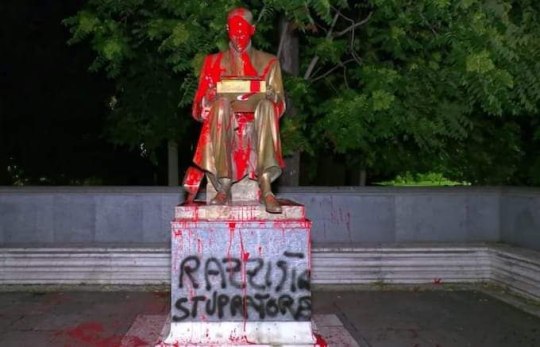
The reasons of the valdalism seem to be always the same: the constant tribute to the memory of an awful journalist, who was also a (ex) fascist, anticommonist, racist and colonialist.
Indro Montanelli only merit was surviving a terrorist attack from Red Brigades as a result of his being a right-wing journalist with a fascist past never fully denied. Unfortunately when they shot in the legs, they turn him into a freedom martyr, who Montanelli was not.
Here there are some examples of what I'm talking about:
1. “We will never be rulers if we do not have the exact awareness of our fatal superiority. He does not fraternize with niggers. You can't, you shouldn't. At least until a civilization has been given to them. […] This war is for us like a nice long holiday given to us by the Gran Babbo (Mussolini) as a reward for thirteen years of school. And, said among us, it was time. None of us hope that the war will end, we have only one desire: to continue!" (Indro Montanelli, article published on Fascist Civilization, 1936)
“Non si sarà mai dei dominatori, se non avremo la coscienza esatta di una nostra fatale superiorità. Coi negri non si fraternizza. Non si può, non si deve. Almeno finché non si sia data loro una civiltà. […] Questa guerra è per noi come una bella lunga vacanza dataci dal Gran Babbo (Mussolini) in premio di tredici anni di scuola. E, detto fra noi, era ora. Nessuno di noi si augura che la guerra finisca, abbiamo un solo desiderio: continuare!”
(Indro Montanelli, articolo pubblicato su Civiltà Fascista, 1936)
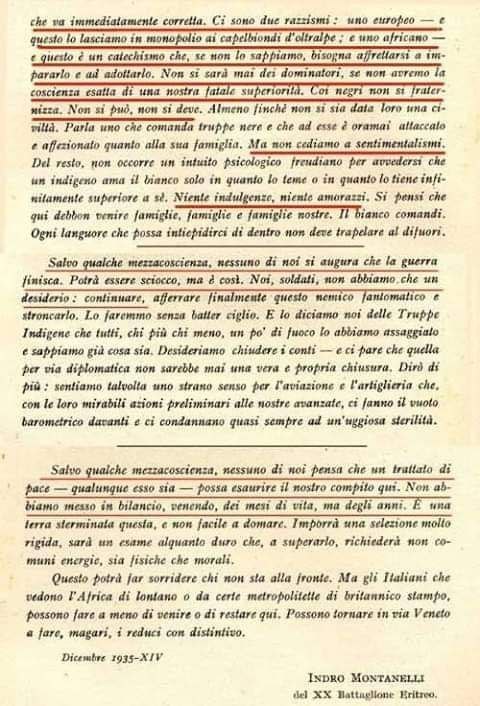
2. On the use, removed for decades, of lethal chemical weapons during the Ethiopian war, Montanelli stubbornly stood on a denial line. In the end, after the Dini government in 1995-96, definitively clarified the modalities and dimensions of the use of aggressive chemicals, he had to apologize.
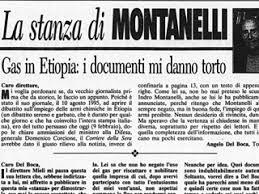
3. "Captain, it's a senseless sentence," he wrote to Priebke - German war criminal, Gestapo agent and captain of the SS during the Second World War, responsable of the Fosse Ardeatine massacre, a reprisal for an Italian partisan attack on German troops. 335 men were executed, 10 italian civilians for each German soldier who had been killed in the attack - in 1996, "As an old soldier, and even of an Army very different from yours, I know very well that you could not do anything other than what you did [...] Best wishes, Mr. Captain ".
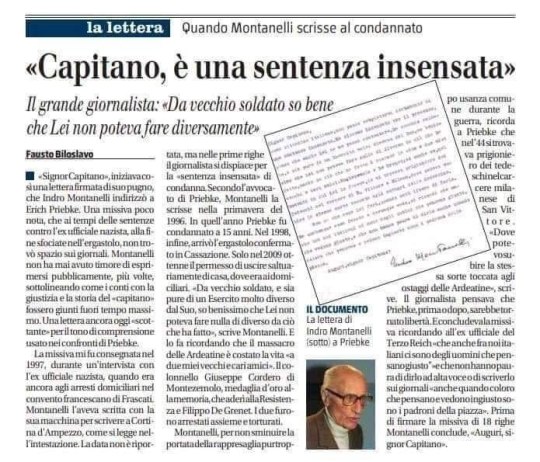
4. Montanelli wrote to the US ambassador Clare Booth Luce in 1954, informing her of the formation of a paramilitary anti-communist organization and asking her to guarantee the help of the American army in terms of arms, fleet and aviation: “If at the next election a Popular Front however constituted popular reached the majority, what Scelba [ Mario Scelba (5 September 1901 – 29 October 1991) was an Italian politician who served as the 33rd Prime Minister of Italy from February 1954 to July 1955] would do? It would deliver power, and it would be the end ... Any man of government, even non-Christian Democrats today, would surrender for the total impossibility of carrying out a coup d'etat ... The police and the army are polluted with communism. The carabinieri without the King, have lost every bite. And across the country there is no force capable of supporting the action of a resolute man. We must create this force. You can't go wrong looking at the history of our country, which is that of an abuse imposed by a minority of one hundred thousand sticks. Majorities in Italy have never counted: they have always been in tow with this handful of men who did everything with violence, the unification of Italy, its wars and its revolutions. This minority still exists and is not a communist [...] Faced with this reality, I find myself in this dilemma: to defend Democracy until accepting, for it, the death of Italy; or defend Italy to accept, or even hasten, the death of Democracy? My choice is made. "
“Se alle prossime elezioni un Fronte Popolare comunque costituito raggiungesse la maggioranza. Scelba cosa farebbe? Consegnerebbe il potere, e sarebbe la fine… Qualunque uomo di governo, oggi, anche non democristiano, si arrenderebbe per totale impossibilità di compiere un colpo di Stato… La polizia e l’esercito sono inquinati di comunismo. I carabinieri senza il Re, hanno perso di ogni mordente. E in tutto il paese non c’è una forza capace di appoggiare l’azione di un uomo risoluto. Noi dobbiamo creare questa forza. Non si può sbagliare guardando la storia del nostro paese, che è quella di un sopruso imposto da una minoranza di centomila bastonatori. Le maggioranze in Italia non hanno mai contato: sono sempre state al rimorchio di questo pugno di uomini che ha fatto tutto con la violenza, l’unità d’Italia, le sue guerre e le sue rivoluzioni. Questa minoranza esiste ancora e non è comunista […] Di fronte a questa realtà, mi trovo in questo dilemma: difendere la Democrazia fino ad accettare, per essa, la morte dell’Italia; o difendere l’Italia fino ad accettare, o anche affrettare, la morte della Democrazia? La mia scelta è fatta”.
LE LETTURE CONSIGLIATE:
Sulle lettere di Montanelli a Clare Boothe Luce:
- M. Del Pero, Anticomunismo d’assalto, in «Italia Contemporanea», Istituto Nazionale per la Storia del Movimento di Liberazione Nazionale, n. 212 (1998), pp. 633 – 646
- M. Del Pero, M. G. Rossi, Una Gladio in borghese. Intervista a Indro Montanelli, in «Italia Contemporanea», Istituto Nazionale per la Storia del Movimento di Liberazione Nazionale, n. 212 (1998), pp. 647 – 652
Su Clare Boothe Luce:
- S. J. Morris, Rage for fame: the ascent of Clare Boothe Luce, Random House, New York, 1997
- W. Sheed, Clare Boothe Luce, Weidenfeld and Nicolson, London, 1982
- M. Del Pero, American pressures and their containment in Italy during the ambassadorship of Clare Boothe Luce, 1953-1956, in: «Diplomatic History», vol. 28 n. 3 (giugno 2004)
5."In Italy, a pickaxe blow to the closed houses was enough to bring down the entire building, based on three fundamental props: the Catholic Faith, the Fatherland and the Family. Because it was in the so-called brothels that these three institutions found their safest guarantee, "wrote Addio Wanda, published in 1958 in opposition to the Merlin Law, the law that closed brothels and criminalized forced induction to prostitution. Montanelli was against the Merlin Law because “(...) The day in which they are allowed to live their life without fear of ending up in those menageries, Italy is destined to become one of the many countries of Protestant morality and customs, where the condition of virgin it does not exist, just as there is no whore, all women being united in an intermediate limbo; and where the family no longer exists, your duties having been absorbed by the society (...) Madam, do not delude yourself, either as an Ambassador or as a convert: between Cardinal Ruffini and the abstinent chaste vegetarian standard bearers of Initiative, the true Catholic is the cardinal, who does not do the Robinson Crusoé of Virtue. Like military chaplains, who are authentic priests because they live among authentic men (...) Tits and flag, Madam. They are the summary of the history of Italy, its inseparable pillars, its engine, the key to understanding it. To abolish one is to destroy the other. " N.B: Althought Montanelli portrays in a very negative way the end of the traditional view of women as “virgins” or “whores” - I Think he would be glad to know that in Italy this way to see women in society never really ended - and also called feminists and abolitionists “churchy” - even if he ws the one who actually defended brothels and forced prostitution to protect the Church and the traditional families -, he wrote unitentionally some good point of feminism goals!
“È bastato in Italia un colpo di piccone alle case chiuse per far crollare l’intero edificio, basato su tre fondamentali puntelli: la Fede cattolica, la Patria e la Famiglia. Perché era nei cosiddetti postriboli che queste tre istituzioni trovavano la loro più sicura garanzia (...) Il giorno in cui ad esse si conceda di vivere la loro vita senza timore di finire in quei serragli, l' Italia è destinata a diventare uno dei tanti Paesi di moralità e di costume protestanti, dove la condizione di vergine non esiste, come non esiste quella di puttana, tutte le donne essendo accomunate in un limbo intermedio; e dove non esiste più la famiglia, le sue mansioni essendo state assorbite dalla società (...) Signora, non si faccia illusioni, né come Ambasciatrice, né come convertita: fra il cardinal Ruffini e i casti astinenti vegetariani alfieri di Iniziativa , il cattolico vero è il cardinale, che non fa il Robinson Crusoé della Virtù. Come i cappellani militari, che sono dei preti autentici perché vivono in mezzo agli uomini autentici (...) Tette e bandiera, Signora. Sono il riassunto della Storia d'Italia, i suoi inseparabili pilastri, il suo motore, la chiave per comprenderla. Abolire l'uno significa distruggere l'altro."
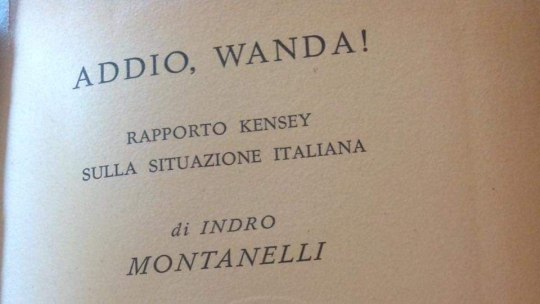
6. "Ah! Sicily! - he states in February 1960 in an interview with the prestigious French magazine Le Figaro Letteraire - You have Algeria, we have Sicily. But you are not obliged to tell the Algerians that they are French. We, an aggravating circumstance, are obliged to grant the Sicilians the quality of Italians".
“Ah! La Sicilia! Voi avete l’Algeria, noi abbiamo la Sicilia. Ma voi non siete obbligati a dire agli algerini che sono francesi. Noi, circostanza aggravante, siamo obbligati ad accordare ai siciliani la qualità di italiani”.
7. Oxford riot, September 1962. Segregationists protest against the enrollment of James Meredith, the first black man to do so, at the University of Mississippi. The clashes make 2 dead and 300 injured. This is the comment of Indro Montanelli, in the Corriere della Sera of October 3, 1962: “(...) Little by little America is realizing that with this problem it must live together because it cannot solve it. Or rather, it can solve it only in the legal context of equality of civil rights. Biologically, no. Because it will be unfair, it will be repugnant, it will be rationally inexplicable and unacceptable; but it is a fact that mingling with blacks has given catastrophic results wherever it has been practiced. I know I say a heresy, for the times that are running, but I prefer heresy to hypocrisy.”
(...) Piano piano l'America sta rendendosi conto che con questo problema essa deve convivere perché non lo può risolvere. O meglio, lo può risolvere solo nell'ambito giuridico della parità dei diritti civili. Biologicamente, no. Perché sarà ingiusto, sarà ripugnante, sarà razionalmente inesplicabile e inaccettabile; ma è un fatto che il meticciato coi neri ha dato risultati catastrofici dovunque lo si è praticato. So di dire un'eresia, per i tempi che corrono, ma preferisco l'eresia all'ipocrisia.
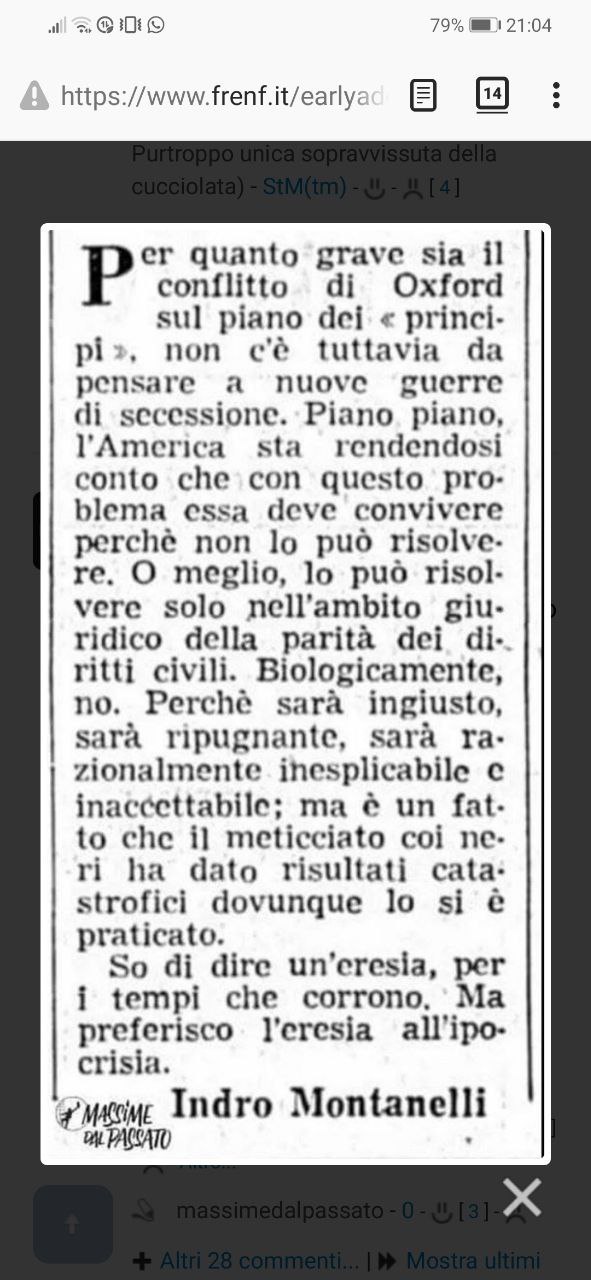
8. Backed by Giorgio Bocca, he called the journalist de l'Unità Tina Merlin, who denounced the human faults in the Vajont Disaster [ On 9 October 1963, during initial filling, a landslide caused a megatsunami in the lake in which 50 million cubic metres of water overtopped the dam in a wave of 250 metres (820 ft), leading to the complete destruction of several villages and towns, and 1,917 deaths. Although the dam itself remained almost intact and two-thirds of the water was retained behind it, the landslide was much larger than expected and the impact brought massive flooding and destruction to the Piave Valley below. This event occurred after the company and the Italian government concealed reports and dismissed evidence that Monte Toc, on the southern side of the basin, was geologically unstable. They had disregarded numerous warnings, signs of danger, and negative appraisals, and the eventual attempts to safely control the landslide by lowering the lake's level came when the landslide was almost imminent.] "jackal". He will make amends twice, in 1997 and 1998, from La Stanza di Montanelli in Corriere della Sera, confessing two serious faults: to have arrived on the spot without knowing anything about the dam and to have taken a totally ideological position in favor of the responsible company, Sade, only because it is contrary to the nationalization of electricity.
9. In a cable of January 12, 1978, declassified by US Government and published by WikiLeaks, called "Montanelli sees the blood ahead", US diplomats report in Washington in 1978 what they define the "tactics" of the journalist: blackmailing the DCs [Demo-Christian Party] ready to make concessions to the communists and sink Berlinguer to return the PCI [Italian Communist Party] to the hard line. Going back to the hard line, the next step would be a civil conflict, in which the PCI would be destroyed. Perhaps - says the journalist - Italy would have a Pinochet-like democracy. That would be a hellish prospect, but better than a government with the PCI.
10. In the Giornale of 24 October 1980 Montanelli wrote - inventing a source - that he had known, eleven years earlier, that is, immediately after the massacre in Piazza Fontana, that Pinelli, police informer, had confided to Commissioner Calabresi that the anarchists were preparing "something big". Then, when Calabresi, who obviously had recorded everything, made him feel the tape, Pinelli, not resisting the idea that his companions qualified him as informer, would have thrown himself out the window.
Needless to say, they were all lies. Called to answer his statements in court Montanelli had to repeatedly apologize, admit that he was wrong, that he was misunderstood, that he did not express himself well, that he invented relevant details from a healthy point of view. In front of the judges he had to take everything back, so much so that the attorney general said "And since I was a boy I always gave him a kind of myth, today this myth has collapsed". "When he wrote unpredictably, on his admission, to be interrogated as witnesses in a public trial ... therefore with the inevitable consequence of being misguided. On the other hand, he threw the thesis back into circulation and he loved the responsibility of the anarchists in the massacre" .
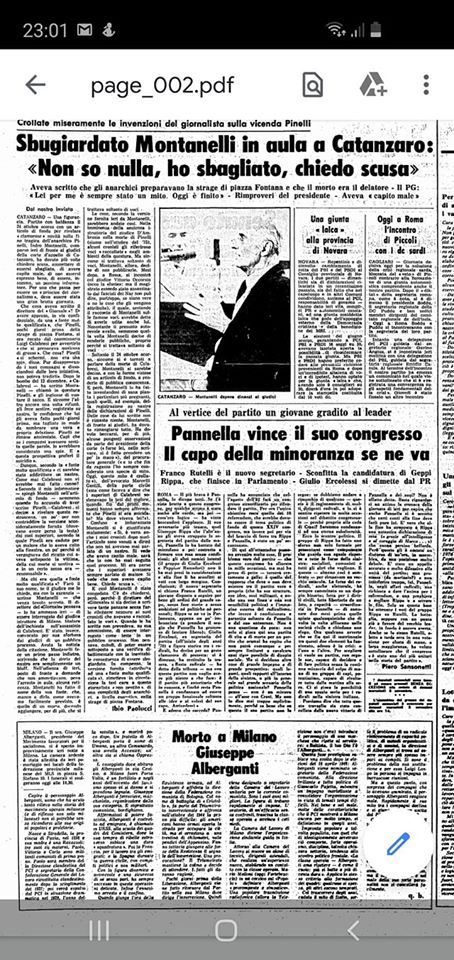
#indro montanelli#Italian journalism#italian history#italian politics#history#Italy#italian#montanelli#Vavuskapakage
10 notes
·
View notes
Text
The Weird History of A Chinese Ghost Story Franchise
https://ift.tt/3oonTBD
When A Chinese Ghost Story premiered in 1987, it was already part of a unique category – the fusion of horror, comedy, and Kung Fu. Asian horror films are known as jiangshi, which is the name of a specific spooky hopping ghost found in Chinese folklore that proliferates these films.
Part zombie, part vampire, jiangshi are corpses that are usually reanimated by demons or Daoist sorcerers. They hop along mindlessly with their arms outstretched like sleepwalkers, and feed on the life essence – or qi – of the living. Often a jiangshi is blind but can smell breath. This makes for great comic hijinks as hapless characters struggle to hold their breath while gruesome jiangshi shove their rotting noses close to their mouths trying to pick up the scent.
Comedy is a common horror film device. It releases tension and leaves the audience unguarded for the next jump scare. The addition of Kung Fu is purely Hong Kong and can be traced to Sammo Hung’s groundbreaking Encounters of the Spooky Kind in 1980. Adding martial arts action comes naturally because in Chinese culture sorcerers and exorcists are Daoist or Buddhist Kung Fu masters. In the wake of that film, Kung Fu Horror Comedies became a thing of its own with plenty of franchises, most notably Mr. Vampire.
If the horror, comedy, and Kung Fu menage a trois wasn’t enough, A Chinese Ghost Story was one of the first films of a then-burgeoning period genre called FantAsia. FantAsia is the Chinese answer to sword and sorcery flicks. It includes superhuman Kung Fu (which means lots of wirework and flying about), magic spells and supernatural beasts. FantAsia is based on a longstanding body of fiction in movies and literature known as Wuxia, which means ‘martial heroes.’
A Chinese Ghost Story was produced by Tsui Hark, who spearheaded FantAsia with his Zu: Warriors From The Magic Mountain four years prior to A Chinese Ghost Story, and followed with many other FantAsia classics like The Swordsman, Once Upon a Time in China and Green Snake. Ching Sui-tung directed all three A Chinese Ghost Story films and continues to deliver FantAsia films like The Sorcerer and the White Snake, but Tsui is the undisputed father of the genre.
The Chinese Twilight Zone from the 1800s
A Chinese Ghost Story retells a beloved Chinese tale of star-crossed romance. All these Chinese Ghost Story films are titled Qian Nu You Hun in Chinese, which translates into “beautiful woman dark spirit.” This is the story of Nie Xiaoqian, drawn from a 1740 short story compilation titled Strange Stories from a Chinese Studio by Pu Songling. These were stories of the supernatural world with covert social commentary, akin to The Twilight Zone today.
Tales from Strange Stories from a Chinese Studio have been depicted in countless Chinese films and TV shows, most recently in last year’s CGI-drenched FantAsia flick The Knight of Shadows: Between Yin and Yang where Jackie Chan played Pu Songling. Nie Xiaoqian’s tale is a favorite having been retold in over a dozen TV shows and the films mentioned here.
In the original tale, Nie is a beautiful ghost, doomed to haunt an abandoned temple and hunt for souls for a demon that has enslaved her. She tries to capture a milquetoast travelling scholar, Ning Caichen, who manages to free her from her curse and takes her home to help his sickly wife. After Ning’s wife dies, he marries Nie and redeems her. In Chinese folktales, supernatural beings often strive to become human. It’s a device to analyze what being human means, akin to the journeys of Data, Seven of Nine, and T’Pol in Star Trek.
There was a notable adaptation of Nie’s tale in 1960. For that film, Qian Nu You Hun was translated as The Enchanting Shadow and was Hong Kong’s submission for Cannes and the Academy Awards. In the lead roles were two of the most popular actors of their generation. Nie was Betty Loh Ti, who died tragically to an overdose at just 31. Betty was a classic beauty, perfect for Nie, and this was her most celebrated role. Ning was Zhao Lei who enjoyed a long career of over a hundred films from the early 50s to the late 80s.
The Enchanting Shadow is a gorgeous film with sumptuous sets and costumes, which is what gave it such international appeal. It plays out almost like a European gothic horror in its gradual pacing and eerie Theremin soundtrack. With its international acclaim, The Enchanting Shadow set the stage for A Chinese Ghost Story 27 years later.
The Chinese Ghost Story Trilogy
A Chinese Ghost Story casts the alluring Joey Wang as Nie and heartthrob Leslie Cheung as Ning. Also in the cast are Wu Ma as the Daoist exorcist Yin and Lau Siu-ming as the androgynous Tree Demoness (Lau is male). The Tree Demoness steals the show like she plucks the hearts of her prey. Shifting between male and female voices, she attacks with entangling roots reminiscent of The Evil Dead (although she penetrates her victims through the mouth not other orifices). Her main weapon is her tongue, which grows so long that it wraps around her prey, cuts down trees and mutates into fangs and tentacles of Lovecraftian proportions.
Read more
Movies
25 Fiendishly Funny Horror Comedies
By Kirsten Howard
Joey is entrancing, a seductive portrait of long flowing locks wrapped in diaphanous silk gowns. Everything is always blowing in the wind like Beyonce’s hair, lending a mysterious grace to Joey in every scene.
And Leslie is adorably naïve. Who can’t but sympathize for him getting smitten by mystical Joey and her luxurious eyebrows, even if she was trying to eat him? A Chinese Ghost Story was pre-CGI so the special effects are dated: stop motion zombies, puppet tongue prosthetics, post-production glowy effects and lots of wire work. But there’s a certain charm to the cleverness of the effects. It’s old school filmmaking and although it looks dated now, it still works.
Three years later, the cast was reunited for A Chinese Ghost Story II. It picks up where the original left off. Leslie is still the innocent Ning, thrust in a horrid world. To show the brutality of his environment, there’s an early homage to Yojimbo, with a stray dog fetching a severed human hand.
Ning is in trouble from the start. He accidently sits down in a restaurant for cannibals, and then gets thrown in jail. After Elder Chu (Ku Feng) helps him escape, Ning gets mistaken for Chu by his gang of rebels. One of the gang members is Windy, who bears an uncanny resemblance to Nie because she’s played by Joey Wang. Ning is smitten again.
New to the cast is another Daoist wizard named Autumn (Jacky Cheung) and his frenetic energy ramps up the comedy and action.
The sequel quickly goes to a lot of fun places with absurd fight choreography, Daoist and Buddhist magic, amorous naked hijinks, crazy flying sword blades and a hysterical giant gloppy demon puppet that’s tenuously held captive by a Daoist freezing spell. And the reveal of the main demon is over-the-top strange and hilarious.
A Chinese Ghost Story III came out the following year, but it’s a break from the narrative. In the first film, the Tree Demoness was banished for a century, so the threequel skips forward to a century later, outliving Ning and the other good characters. Lau Siu-Ming reprises his Tree Demoness role and Joey Wang returns as another beautiful ghost named Lotus. She’s joined by her sister ghost Butterfly (Nina Li, Jet Li’s wife). Jacky Cheung returns but as a different character, the Taoist exorcist Yin. It’s the same name as Wu Ma’s character in the first film because Jacky plays Yin’s rejected student.
Replacing the lovelorn Ning is a bumbling Buddhist disciple, Shifang (Tony Leung Chiu-Wai) and his master Bai Yun (Lau Shun). Their relationship adds its own comic relief. Early on, Shifang is splattered with blood while witnessing a random roadside sword fight, just like what happened to Ning, while Bai Yun meditates obliviously.
Although the weakest of the trilogy, the special effects have improved over the years. The Tree Demoness’ tongue lickings are more vicious, including a tongue’s eye-view as it deep throats its prey and swims down to pluck out its heart. Lotus attacks with her entangling locks and Butterfly uses telescopic fingernails.
Instead of Daoist sorcery, there’s more Buddhist magic: restraining sutra wraps, flying carpet cassocks, magic malas, and blood so pure that it is gold. And who can forget Bai Yun’s enchanted earlobes? The finale demon reveal is the strange bastard child of a Transformer and a Kaiju that doesn’t quite work but by then, things have gotten so outrageous that it doesn’t really matter.
More Haunting Chinese Ghost Stories
Tsui Hark returned to the romance of Nie and Ning in 1997 for A Chinese Ghost Story: The Tsui Hark Animation. That was during a pivotal year for Hong Kong because it was the handover when it ceased being a British colony and was returned to China. Consequently, Hong Kong cinema was on fire. Filmmakers had no idea what would become of their industry under communist China, so they were producing their edgiest political work as many tried to immigrate to other countries in fear of having their artistic vision oppressed.
Hark had been working on the project for years and the animated format allowed him to unleash his vision like never before. This story stands independent of the others, but revisits characters developed for the threequel.
Ning and Nie are the same, although Nie is translated as Shine. Nie Xiaoqian translates to “whispering little lovely” so it’s unclear why Shine was chosen for the English language version. Other characters are translated literally like White Cloud and Ten Miles (translations of Baiyun and Shifang). Also appearing are Butterfly and the Tree Demoness, renamed Madame Trunk, along with her creepy bald minor demoness entourage.
Read more
Movies
Zu: The Movie That Inspired Big Trouble In Little China
By Craig Lines
Replacing Master Yin is a new Daoist exorcist named Red Beard who travels in the bizarre magical giant transformer with temple bells for arms, a drum for a torso and barrels for legs. There’s also Mountain Evil, a giant rock star like demon that holds a concert and is obsessed with his hair. There’s a lot of music in this installment.
And Ning has a dog sidekick, Solid Gold, who serves as a comical canine conscience. For the Chinese versions, Tsui Hark voiced Solid Gold, which is funny because he only makes dog noises like barks and whimpers.
Like the threequel, Ning finds himself in a cannibal restaurant but this time, it’s not in the normal world. This one is filled with demons. A Chinese Ghost Story: The Tsui Hark Animation is a deep dive into the yaoguai world.
Yaoguai means “supernatural and strange.” Fans of Asian cinema know it better from the Japanese term Yokai. It’s the world of magical creatures – fairies, demons, ghosts, immortals, enchanted snakes and foxes – different from the elves and gnomes found in Western folklore.
Hark’s animated film was echoed in Hayao Miyazaki’s Oscar-winning Spirited Away four years later. A Chinese Ghost Story: The Tsui Hark Animation transitions between conventional and CGI animation, which was groundbreaking then but comes off awkward today. It has its visionary moments but pales in comparison to the artistry of Spirited Away.
In 2011, a remake came out, appropriately titled A Chinese Ghost Story 2011 and answered the question “What would A Chinese Ghost Story look like with today’s eye-popping CGI special effects?” Sadly, it doesn’t help despite a stellar cast.
Nie is played by Crystal Liu, who just appeared in the titular role in Mulan, but she falls short. Crystal is China doll cute, but she lacks the mystery needed for a haunting ghost. Ning is Yu Shaoqun. Like Leslie Cheung, Yu is a pretty boy singer, but doesn’t add much to the role beyond eye candy.
The Tree Demoness is veteran actress Kara Hui, who usually delivers gripping performances, but here she reduces the character to a cackling maniacal wicked witch that is strangely unsatisfactory.
There’s some redemption in the Daoist exorcists, which have a completely different and complex story arc. There are two, Yan Chixia, played by a brooding Louis Koo, and the one-armed Xia Xuefenglei, played by Louis Fan. The remake doesn’t capture the charm of the originals and the effects are unimaginative.
This isn’t to say that this version is totally negligible. It has some moments like the villagers getting infected after rerouting water from the tree demon’s pool which makes them grow leaves. The villagers provide good comic relief. The sword fights are amusing too. The duel between the two Louises is high flying Kung Fu fun. The film is dedicated to the memory of Leslie Cheung, who tragically committed suicide by jumping off a building in 2003.
Despite the title, A Chinese Ghost Story isn’t frightening. There’s nothing in any of the films that might keep one up at night. It’s a haunting tale of undying romance, retold with visionary action and hilarious slapstick moments that, apart from some splattered demon ichor, is family friendly, with about the same level of frights as the Ghostbusters franchise. But be warned. A Chinese Ghost Story opens the portal to the psychotropic genre of FantAsia Kung Fu horror comedies. Once entered, there are hundreds of films in this genre that can possess a viewer for months of binging.
cnx.cmd.push(function() { cnx({ playerId: "106e33c0-3911-473c-b599-b1426db57530", }).render("0270c398a82f44f49c23c16122516796"); });
A Chinese Ghost Story and A Chinese Ghost Story II are available on Amazon Prime.
The post The Weird History of A Chinese Ghost Story Franchise appeared first on Den of Geek.
from Den of Geek https://ift.tt/37EHXtR
4 notes
·
View notes
Text
2018: #12-SUPERVILLAINS

The origin of the word “villain” reveals a secret about the significance of villains and supervillains. The origin of “villain” is the Latin word villanus; it curiously means farmhand. It refers to workers on villas or plantations. Over the years it transformed into the word “villein,” which meant serf or peasant. A villein came to mean that a person was lacking the politeness or chivalry of a knight – that the person was of a lower social status. Over some more years and human negativity further tainted the term. “Villein” in French is now “vilain” meaning bad or ugly, and the Italian “villano” means rude. What has happened is that one type of people has vilified another type of people as seen in the etymological corruption of the meaning. The significance of this is the difference between a criminal and a villain. A criminal is symbolically branded as a wrong-doer for breaking the law. A villain could be a mislabeled, misunderstood, oppressed person, a farmhand, and not necessarily a wrong-doer. Therefore some supervillains could be more like social rebels and less like evil criminals…
Early villains in fiction wore all black with a tall black hat and a twirly mustache. This was the archetypical image of villains such as Snidely Whiplash from The Rocky and Bullwinkle Show. Early villains included the Sheriff of Nottingham from Robin Hood, Professor Moriarty with Sherlock Holmes, and Ming the Merciless from Flash Gordon (see 2012: #8-MING THE MERCILESS IN THE FOGGY RING OF HELL). In the 1960’s some villains started to emerge who had huge agendas, including: Blofeld from the James Bond series and the Master from Doctor Who (see 2017: #4-SPIES and 2018: #2-GUIDE TO DOCTOR WHO). Perhaps the furthest a villain can go is to have a successful take over of the entire universe. To be able to threaten the universe’s existence nearly as a god, and to make announcements to the occupants of the universe as your subjects is when you have won the supervillain game. This has been done by the tv villains of the Master and Mantrid from the Lexx series, and each ended up destroying at least a section of the entire universe. Now that’s very, very bad and leads us to supervillains…
Supervillains are primarily comic book villains. The term originates from the 1960’s. The most simple definition of “supervillain” is a villain who has a superhero as an opponent. Supervillains often have specific costumes or outfits, catchy names, special talents or gimmicks, henchmen, secret hideouts, secret identities, and master plans. Supervillains appear in comic books to be challenging opponents of superheroes. If the supervillain does not have special powers, then they may have special skills that distinguish them like being a genius. A predominant supervillain personality trait is that of having megalomaniacal delusions. Many supervillains have similarities to dictators, terrorists, and gangsters, with aspirations of world domination.
Supervillains are not always criminals. Sometimes they behave as social rebels. They may not be farmhands or serfs, but they sure are rebelling. Heath Legder’s Joker standing there laughing with millions of dollars burning behind him is the quintessential film scene depicting this. Jack Nicholson’s Joker art gallery scene brings the rebellion to art. Burgess Meredith’s the Penguin only ever had one goal: to have Batman arrested, sued, entrapped, and disgraced. Sometimes supervillains are even depicted as being sympathetic. Magneto from the X-Men comics and films is a supervillain basically because he was a Nazi victim in WW2. Sometimes the line between the hero and villain becomes blurred. Sometimes supervillains become the good guys temporarily at least. The Legends of Tomorrow tv series has included such supervillains as Captain Cold working on a team for a common aim with other supervillains. Since there are so many supervillains, to understand them we must classify them…
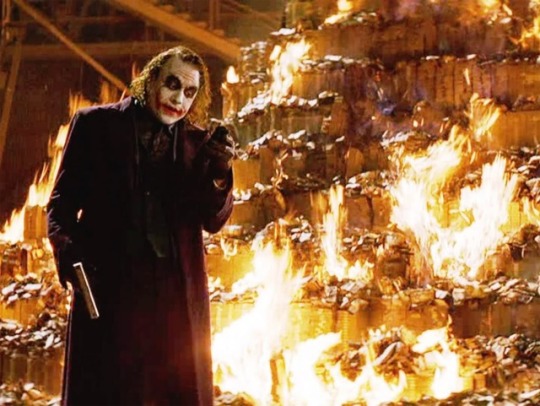
The first classification of supervillain is for highly talented people without any special powers. This includes Lex Luther, the Penguin, the Riddler, Harley Quinn, and Cat Woman. A sub-classification are highly talented people with special training: Deathstroke, Kingpin, and even the Joker supposed to have studied chemistry. Another sub-classification of supervillains are highly talented people with scientific gizmos: Dr. Octopus, Mr. Freeze, Captain Cold, and the Scarecrow who often uses hallucinatory drugs on his victims as seen in the excellent Batman Arkham video game series. Many gizmo users are also mad scientists (see #2018: #5-MAD SCIENTISTS).
The second category of supervillains include normal people who gained special powers. This often means that the person came into contact with a rare manufactured substance that transformed them. This classification includes the Reverse Flash, Sandman, Bane, Poison Ivy, and the alien-looking Black Manta appearing in December 2018’s Aquaman film. There are a rare few supervillains in this classification that had their transformation sparked by a natural phenomenon. One such supervillain was Vandal Savage who was seen on season two of Legends of Tomorrow. Vandal Savage was a caveman who touched an alien meteor and developed super powers including eternal life. Another supervillain in this classification, Juggernaut from the Deadpool 2 film, received his size, strength, and power from touching the magical Crimson Gem of Cyttora.
A third classification of supervillain are those with natural, special powers that they were born with. This often signifies that the person is a mutant, usually placing them in the realm of the X-Men. This classification includes: Magneto, the blue Mystique, and the also blue Apocalypse, the first mutant from 2016’s X-Men: Apocalypse film. A sub-classification of supervillains with powers are aliens, with many from the Superman comics. Superman’s foe, General Zod is an alien, originating from Superman’s home planet of Krypton. General Zod also created an evil Superman clone with grey skin named Bizarro. The strange Mister Mxyzptlk is another Superman supervillain, the “imp from the Fifth Dimension.” Another sub-classification of supervillains with powers are demigods and actual gods, such as Loki or Hela, the goddess of death from 2017’s excellent Thor: Ragnarok. Thanos falls into this sub-classification, from 2018’s Avengers: Infinity War film. Thanos is basically a Grecian Titan even though he is an alien, an Eternal. The top villain in the D.C. universe is Darkseid, whose father was Zonuz, the first god of evil and also the last Old God. Darkseid had the ultimate goal of controlling everyone in the universe. The one superhero who fights the most amount of deities, demigods, and cosmic entities is Doctor Strange. His first foe was Nightmare, evil ruler of the Dream Dimension. He fought the godlike Eternity and had a regular fantastic foe with the cool-looking Dormammu, ruler of the Dark Dimension who briefly appeared in 2016’s Doctor Strange film.
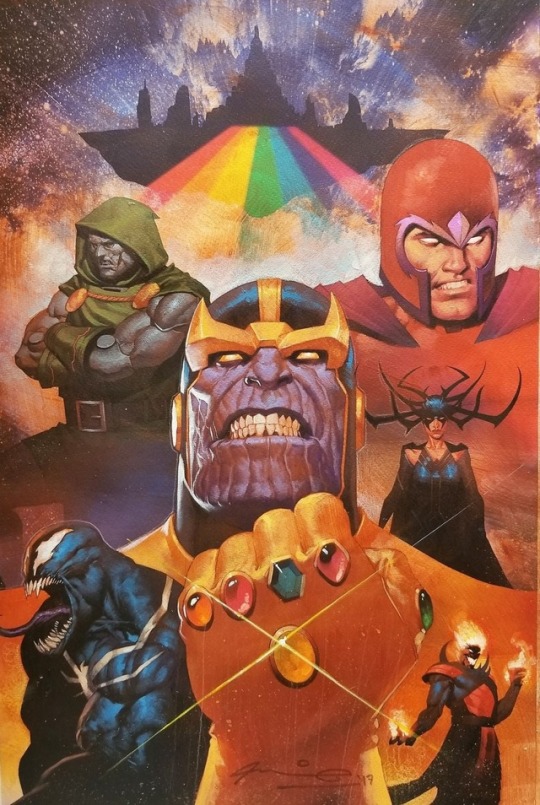
A fourth classification of supervillains exists, those with dark powers. These are supervillains who border on being monsters or really are monsters. One such supervillain is Flash’s foe, Gorilla Grodd. Gorilla Grodd was a gorilla in Africa that came into contact with either a meteor or a spacecraft. In either case, he became ultra-powerful, brilliant, telepathic, and he could control minds. Venom is a particularly cool villain because he is a monster, created by an alien symbiont lifeform. What is surprising about Venom in the comics is that he sort of becomes a hero for homeless people. Eventually a harness is put on him and he works for the military on missions as Agent Venom. Hopefully a sequel to the 2018 Venom film will be made that is a proper cult film. In 1944 D.C. Comics had a wealthy merchant named Cyrus Gold get killed in Slaughter Swamp near Gotham City in All American Comics. He then rose as a zombie fifty years later, as supervillain Solomon Grundy, and went on a killing spree and became a Green Lantern villain. Morbius the Living Vampire is about a man who transforms himself into a vampire via a chemistry experiment, and he dons a cool outfit and transforms from being a Spider-Man supervillain to becoming an antihero superhero with his own comic and a film on the way in the future.
A fifth classification of supervillain are atypical supervillains who may fit in no other categories. These usually are supervillains that did not originate from comic books. M. Night Shyamalan’s film from 2000, Unbreakable, features Samuel Jackson as Elijah Price, a supervillain who is returning in January 2019’s Glass along with James McAvoy’s character from 2016’s Split. A sixth classification of supervillains are those appearing in comedy. The Terror appeared in both series of The Tick, and the new Amazon The Tick live action series is pretty good. The animated Adult Swim tv series from 2006-2008, Frisky Dingo, created by Archer’s Adam Reed, featured the supervillain main character of Killface who appeared as a ridiculous but powerful lich obsessed with destroying the Earth with his mad scientist weapon, the Annihilatrix. There are not many supervillains appearing in comedy.
But there are quite a few teams of supervillains. The Suicide Squad is a team of supervillains forced to work for the good guys. The 2016 film was awful, and a sequel is in the way. The Suicide Squad team members change a lot throughout the comics but usually include Deadshot and Captain Boomerang. The Sinister Six are a group of Spider-Man supervillains who are rumored to appear in a future film. The team includes Dr. Octopus, the Vulture, Electro, Kraven the Hunter, Mysterio, and the Sandman. 2019’s Spider-Man: Far From Home will nearly include the Sinister Six with: Michael Keating reprising his Vulture, Michael Mando as the Scorpion, and Jake Gyllenhaal as Mysterio. Yet another supervillain team is the Legion of Doom which appeared in 1978’s Challenge of the Superfriends cartoon tv series. The Legion of Doom consisted of: Bizarro, Cheetah, Captain Cold, Black Manta, Gorilla Grodd, Sinestro, Solomon Grundy, and more!
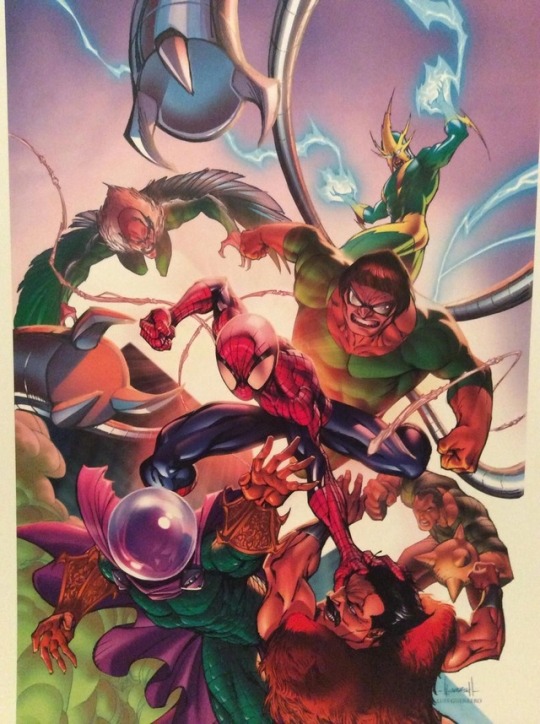
If we toss all of the supervillains into the Cauldron of Creepiness, which three bubble up to the top and rise above the rest? The Joker is pretty much the number one villain. And Venom is pretty much the most monstrous villain. So those two are easy. I would have to say that Superman’s strange supervillain, Mister Mxyzptlk, would be the third to rise to the top. Since he is from the Fifth Dimension he can virtually do magic and twist reality. The Joker, Venom, and Mister Mxyzptlk are probably the top three coolest supervilllains. But if the top three strongest supervillains were selected, it would be a completely different group. Thanos with his Infinity Gauntlet is certainly in the top three; he sure had plans on making major alterations to the universe! Dormammu is definitely one of the top three most powerful supervillains with godlike powers. His head is made out of evil fire. Dormammu would not be affected by the Infinity Gauntlet, and he could take Thanos down with ease. But Dormammu could be taken down by Galactus, an alien from the planet Taa from before the Big Bang. Galactus survived the destruction of his universe by bonding with the Sentience of the Universe. He gestated for billions of years in our universe until he woke up, and he woke up hungry so he started devouring whole planets. An alien eventually made a deal for Galactus not to gobble up his planet, and the alien was transformed into the herald of Galactus, the Silver Surfer. So Galactus is pretty much the most powerful supervillain.
Superhero films pretty much started with 1966’s Batman: the Movie with Adam West. The quality of the film is usually directly related to the quality of the depiction of the supervillain. 1989’s Batman with Tim Burton’s vision and Jack Nicholson as the Joker is a classic. The Dark Knight with Heath Ledger as the Joker is also an incredible film. The Dark Knight Rises with Bane is also a decent film with an amazing scope. As for tv, Adam West’s Batman series is one of the best for outrageous supervillains. Cesar Romero’s Joker is excellent, Burgess Meredith served up the best Penguin to date, Frank Gorshwin provided an effervescent and the best Riddler, and Vincent Price laid a wonderful Egghead. All three seasons of the series are finally available on disc. Ralph Bakshi’s Spider-Man cartoon series from 1967-1969 was a great series also for its supervillains. It delivered the best Green Goblin even from any film, included traditional supervillains from Electro to the Rhino, had neat-looking monsters, and it featured great incidental music. The Legends of Tomorrow tv series features interesting supervillains, including some who are members of the team of the superheroes. Captain Cold and Heatwave are Flash supervillains who made the transition into being acting superheroes. An entertaining recent depiction of a supervillain was by Tom Cavanaugh as the Reverse Flash on the first season of The Flash tv series. These days Netflix is starting to cancel the Marvel superhero series – the ones with the least interesting supervillains.
Back to the derivation of the word, villain. Could supervillains be related in any way to farmhands, serfs, the poor, or social rebels? Are the superheroes now the super-rich land owners, the knights? Are superheroes ever depicted as being millionaires? Like Bruce Wayne…Tony Stark…Oliver Queen… Hmmm, maybe sometimes the supervillains may not be as bad as they seem, and the superheroes may sometimes be really more villain and less hero…
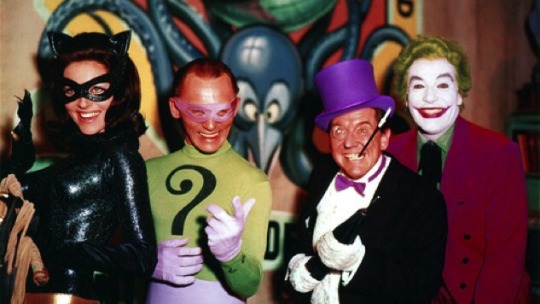
#true halloween tales#halloween#superhero#the joker#batman#superman#doctor strange#dormammu#avengers#thanos#infinity war#sinister 6#venom#the dark knight#spiderman#spiderman cartoon
13 notes
·
View notes
Photo
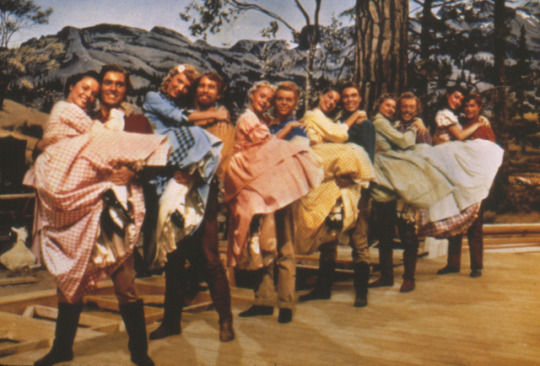
Seven Brides for Seven Brothers (1954)
In the early 1950s, Metro-Goldwyn-Mayer (MGM) had reached the peak of the studio’s powers, becoming the de facto home of the American movie musical. Its recent releases read like an honor roll: In the Good Old Summertime (1949), On the Town (1949), Annie Get Your Gun (1950), An American in Paris (1951), and Singin’ in the Rain (1952). For 1954, MGM needed to juggle two future additions to that list: Brigadoon and Seven Brides for Seven Brothers. The former starred Gene Kelly and Cyd Charisse, was directed by Vincente Minnelli (1944′s Meet Me in St. Louis, An American in Paris), and produced by the famed Arthur Freed unit. The Freed unit produced all of MGM’s A-list musicals, so the studio relegated Seven Brides for Seven Brothers as a “B” picture – cutting its production budget, slashing advertising expenditures. Stanley Donen’s (Singin’ in the Rain, 1955′s It’s Always Fair Weather) movie came dangerously close to being permanently shelved by MGM, but production did commence. In the end, Seven Brides for Seven Brothers outperformed Brigadoon in almost all metrics. And despite its very politically incorrect premise, it has held up better than Brigadoon as well as most musical films from that decade.
It is 1850 in Oregon Territory. Adam Pontipee (Howard Keel) has come down from the mountains – chest forward, masculinity erect for all the villagers to see – to announce he is here to find a bride. After eavesdropping on Milly (Jane Powell) and noting her sassiness and dedication to finishing her chores, he proposes, and she accepts without much question or resistance. Believing she is going home with Adam and only Adam, she is surprised that he also lives with six younger brothers – Benjamin (Jeff Richards), Caleb (Matt Mattox), Daniel (Marc Platt), Ephraim (Jacques d’Ambroise), Frank (Tommy Rall), and Gideon (Russ Tamblyn) – all of whom are ill-mannered slobs, are conveniently colored-coded by the costume design, and most of the six younger Pontipee brother actors are dancers (explained below). Furious at Adam, Milly demands an explanation. He responds that living in the backwoods requires men and women depending on each other to thrive. In time, Milly decides to teach the seven brothers proper etiquette and how to clean up after themselves.
I would be remiss without mentioning the six other women who become the brides (in alphabetical order with who they are hitched with, from Benjamin to Gideon): Dorcas (Julie Newmar), Ruth (Ruta Kilmonis), Martha (Norma Doggett), Liza (Virginia Gibson), Sarah (Betty Carr), and Alice (Nancy Kilgas).
Seven Brides for Seven Brothers is based on “The Sobbin’ Women” by
Stephen Vincent Benét – a parody of the Roman mythological tale of the Rape of the Sabine Women. Wait! One quick explanation, please! Regarding the Rape of the Sabine Women, the word “rape” in the classical context refers to the Latin word “raptio”, which means abduction rather than the contemporary definition of rape. But this means the six other brides will be abducted by the Pontipee siblings – setting up the film’s frantic, comedic finale. A piece of modern feminism Seven Brides is not. Yet viewers need to consider that the seven men in the film have lived their lives in the Oregonian forests, with only Adam having infrequent contact with women and society at the most. The six younger Pontipee brothers might never have met women in a social context; their only understanding of women is through the Greek/Roman myths that Milly has read to them (considering the Rape of Sabine Women and Zeus/Jupiter’s behavior, you are right to be a bit horrified).
The Pontipees know nothing of physical boundaries, being respectful of women, and believe that they – perhaps not necessarily as men, but as individuals – should have what they want. Do you really expect them to not behave like lechers? Through the musical score, Seven Brides positions itself as a satire (and, especially in a scene where the younger Pontipees are trying not to knock other men’s lights out, often a hilarious one), never endorsing the behaviors of the Pontipee brothers. This tale of frontier courtship integrates Stockholm Syndrome (a psychological condition in which a hostage develops sympathetic feelings for their captor; also a narrative trope that has been abused by numerous artistic mediums). This is the point where the film’s screenplay by Albert Hackett (The Thin Man series), Frances Goodrich (Hackett’s spouse and co-writer), and Dorothy Kingsley (numerous Esther Williams movies including 1953′s Dangerous When Wet). As entertaining as Seven Brides is from its opening minutes, the women just seem too forgiving of the Pontipee brothers. Milly, in her active and open resistance to all that Adam is teaching his younger siblings, turns a one-sided argument into a battle of the sexes – making this a far more watchable film than it might otherwise have been.
For the musical team of supervisor Saul Chaplin (1961′s West Side Story), score composer Adolph Deutsch (1960′s The Apartment), song composer Gene de Paul, lyricist Johnny Mercer (maybe the best English-language lyricist from the 1930s-50s), and orchestrators Leo Arnaud (a longtime MGM contractee best known for “Bugler’s Dream”, a theme for American television’s presentation of the Olympics) and Alexander Courage (also a long-serving MGM contractee, but best known for his theme to Star Trek: The Original Series), Seven Brides for Seven Brothers’ musical score is spectacular from the very first song.
That first song? “Bless Your Beautiful Hide”, sung by Howard Keel in the opening minutes. The catchiest song in the film, it also serves as burning a hole through any expectations of clumsy or overlong exposition that can ruin a musical. In two-and-a-half minutes of Keel’s accented, blustering, unusually expressive bass-baritone, “Bless Your Beautiful Hide” has successfully introduced Adam Pontipee – that he is searching for a woman to sling over his shoulder, that she be at least conventionally pretty and not fat, can do work around the house, and someone who is “SASSY as can be!” One could not ask for a better introductory song than this. The song, “When You’re In Love” is a demonstration of Milly’s more refined nature against the rugged Adam. It is the song’s reprise – sung by Adam? – that poses problems. Keel also objected to the reprise’s placement in the film, saying that Adam did not understand what love is the moment he reprises the song (one could interpret it as Adam parroting Milly’s song, not fully understanding the lyrics, but I am not of that camp). Other highlights include Jane Powell singing “Goin’ Courtin’” a few scenes before Adam counters with “Sobbin’ Women” – recounting the story of the Rape of the Sabine Women, and setting the film’s resolution in motion. Seven Brides might not have the most memorable score, but it’s musically fascinating and I can’t label any of its de Paul and Mercer songs – okay, maybe “Wonderful, Wonderful Day” – as a dud.
But we haven’t gotten to the film’s ultimate musical accomplishment yet. Enter the barn dance sequence – an inspired composition by Adolph Deutsch and choreographer Michael Kidd (1953′s The Band Wagon, It’s Always Fair Weather). Alongside the excellent orchestration by Arnaud and Courage, the cue that accompanies this scene is just as fun to listen to within the film as well as when removed from it. Based heavily on “Bless Your Beautiful Hide”, the melody is passed back between strings and woodwinds with infectious zest. Infectious Western-styled themes; string-crossing; finger-numbing runs from the string section set the pace; and, when timed to the athletic, rather than balletic, choreography (the actors who played the six younger Pontipee brothers, the women, and the other suitors are all magnificent dancers), epitomizes the peak of the 1950s MGM musical. Because of the technical footwork, Donen sought to cast six dancers as the younger Pontipee brothers. Three weeks of rehearsal were needed just to record these several minutes of breathtaking movement.
youtube
Why resort to fisticuffs when things can be settled with a dance-off? Instrumentalists, dancers, and those who just love a good musical number will be left in awe here. For those who wanted to see a cartoonish brawl ensue, don’t feel deflated. This film will fulfill your wishes a few minutes after this, too!
Because of the film’s lack of support from MGM executives, the original plans to shoot on-location in Oregon fell through. The screenplay calls for the depiction of all four seasons, which would require a year-round shoot that MGM did not want to cough up for a “B” picture. Thus, Seven Brides for Seven Brothers would be shot almost entirely on the MGM backlot in a soundstage – which allows for some glaringly artificial painted backdrops and foliage that the viewer needs to overlook to enjoy such an electric musical. With production design as clunky as the Yellow Brick Road backdrops in The Wizard of Oz (1939), Seven Brides for Seven Brothers feels like it could have been made decades earlier. But don’t think Seven Brides is stuck in a previous decade. The film was shot on CinemaScope (a widescreen screen aspect format, though not represented in the video provided for the barn raising sequence, that had been introduced the previous year) as well as the then-industry standard 4:3 format – not all theaters had the technology to present CinemaScope or other widescreen formats yet. As a result, Seven Brides for Seven Brothers was shot in and exists in two different formats: a CinemaScope and a 4:3 version. This review was based on the CinemaScope version shown on Turner Classic Movies (TCM), and it is also the print I recommend you watch.
This is a musical movie I had been holding off on for years, for insubstantial reasons. In the end, Seven Brides for Seven Brothers – because of its depiction of men asserting their own gendered primacy – may not appeal to all audiences, and I will not quarrel with anyone who has given Donen’s film a mindful look. The film is hampered by the nature of its narrative and external, business-side limitations. Those aspects should not define it. Seven Brides for Seven Brothers’ gorgeous musical score culminates in a stunning dance scene and contains an unexpectedly thoughtful look on how a single person can inspire change in another (not exclusively in terms of “fixing” them), making this a splendid addition to the best musical lineup produced by any Hollywood studio.
My rating: 8.5/10
^ Based on my personal imdb rating. Half-points are always rounded down. My interpretation of that ratings system can be found here.
#Seven Brides for Seven Brothers#Stanley Donen#Howard Keel#Jane Powell#Jeff Richards#Julie Newmar#Matt Mattox#Ruta Kilmonis#Marc Platt#Norma Doggett#Jacques d'Amboise#Virginia Gibson#Tommy Rall#Betty Carr#Russ Tamblyn#Nancy Kilgas#Gene de Paul#Johnny Mercer#TCM#My Movie Odyssey
5 notes
·
View notes
Text
« Vu du pont (A View from the Bridge) » by Arthur Miller, directed by Ivo van Hove (ODEON, Théâtre de l'Europe - Ateliers Berthier January 4-February 4, 2017)

Photo by myself
It was my first time visiting the Ateliers Berthiers of Théâtre Odéon, which situates at the North-west edge of Paris at Porte de Clichy, a site currently surrounded by autoroutes under construction, seeming to seclude the entire theatre from the liveliness of central Paris.
Ivo van Hove first created his version of A View from the Bridge by Artur Miller in April 2014 at the Young Vic in London. According to Van Hove, his initial inspiration on directing this play occurred while he was researching for the creation of Rocco et ses frères(Rocco and His Brothers, 1960), which took its plot from the film by Luchino Visconti of the same title, which treated the immigration from south to north Italy. A View from the Bridge in turn tells the tale of the Italoamerican immigration, and the direction of the Italian version of the play in 1958 by Visconti is thought to have inspired him in certain ways in the creation of his aforementioned film. Now, the theme of immigration and its conflicts are extremely actual themes for the world today, and in this sense the direction of the play by Van Hove, or might I say his re-creation, was certainly a meaningful act.
Hear more from the director here:
youtube
The play was written upon the request of Miller’s friend, a lawyer, who shared with him a true story concerning the scandalous events which occurred to one of his clients, a longshoreman. The piece was originally conceived as an one act verse drama in 1955 and staged in Broadway, but the initial production being unsuccessful, the playwright revised the work into a two-act prose drama, premiered in October 11, 1956 at New Watergate theatre club in London under the direction of Peter Brook.
The piece features the area surrounding Brooklyn Bridge in the 1950s, an Italoamerican neighbourhood in which the narrator, Lawyer Alfieri runs his business. The narrator first recounts how the majority of the inhabitants are now second-generation Sicilians, who have more or less assimilated into the American culture and society, and have learnt to « settle for half-measure », or « faire des compromis » according to the translation by Daniel Loayza. Yet Eddie, the protagonist of the play, is the few who could not learn to « settle for half ».

Photo by Thierry Depagne
He is a proud docker, living with his wife, Beatrice and her niece, Catherine, whom Eddie had sworn to raise and provide for when she was orphaned as a little girl. As the play opens, Kathie proposes to Eddie her plan to start working, which Eddie initially disapproves but later agrees to. It is on the same night that they welcome two newcomers, Marco, Beatrice’s cousin and his brother Adolpho, into their apartment. The strong bond that Eddie, Beatrice and Cathy shared is put to test when they welcome the two new members into their home, their little doll’s house, where time has stopped and all remained the same for years, where Cathy always stayed a little girl.
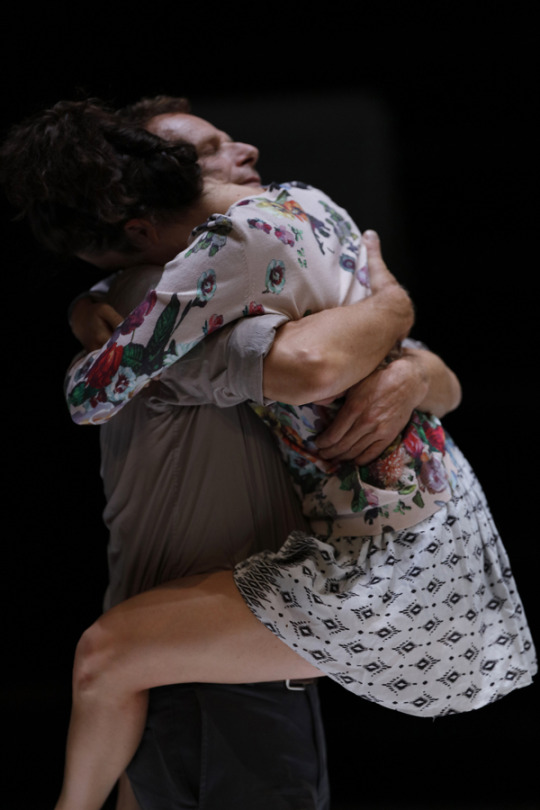
Photos by Thierry Depagne
But when the clock starts ticking once again, they are all faced with the fact that she has indeed grown, that she can not jump into Eddie’s arms the way she used to. While Eddie refuses this change, Beatrice accuses his obsession with Cathy, and Cathy in turn rapidly ventures out to explore the new concept of independence, to work and to love. Eddie’s frustration is not understood by anyone, not even the lawyer Alfiéri, and the unstoppable descent towards the tragedy begins when he tries to take the matter into his own hand...

Photo by Jan Versweyveld (London Production, 2014)
For his creation, Ivo Van Hove and Jan Versweyveld created a simple yet efficient acting space as shown above, with one doorway and a white rectangular stage with black boards secured horizontally with acrylic boards at about 30cm from stage surface, having multiple functions on this decor-less stage. The thick black wall seen overhead was what actually functioned as the curtain, which was lowered to meet the black boards below to create a huge blackbox, closed before the opening of the act and concealing the entire stage from the view of the spectators, as shown below.

Photo by myself
A certain use of water was also extremely important in this direction, which I will refrain from going into details but merely mention that it was to signify the shedding of blood at the climax of the play. The representation of blood is what amazes me and disgusts me at the same time in Van Hove’s direction, sentiments which strongly resembles that evoked by his direction of Les Damnés, of which I just saw the reprise at the Comédie-Française.
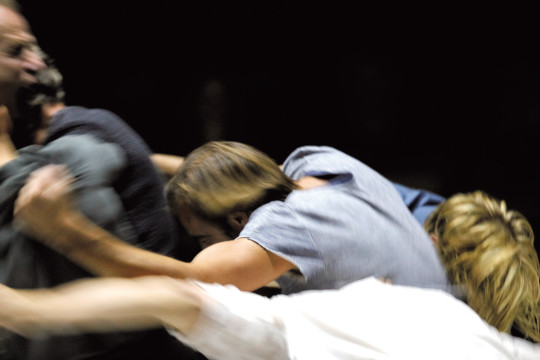
Photo by Thierry Depagne
The actors’ performance, led foremost by Charles Berling who played Eddie, was formidable, oscillating between introspective reflection and sudden bursts of anger and ferocity. Alain Fromager, incarnating Alfieri, remarkably portrayed how the lawyer, born in Italy and raised in America, synchronised with Eddie, and by enacting how he himself was cornered as the tragedy proceeded. Caroline Proust too was the driving force of the entire play in discreet manner, with her nervous glances driving the plot into the inescapable crash. Nicholas Avinée and Pauline Cheviller, the lovers, were not only fresh but showed the depth that young reflections could reach in a very short period of time. Laurent Papot who played Marco was the opposing pillar to Eddie and Alfiéri, with his own anger and vengefulness, aroused especially because of the deep affection for his family. The physical ability of the entire cast was admirable, as their bodies represented any change in scenery or the passing of time.
The use of drums expressing the taught atmosphere were effective, especially during the conversation in the second half of Act 1, accompanying the technique Van Hove employed of the spacing between the lines, to signify the prolonging of time experienced by the uneasy characters. The drums also reminded me of Noh theatre, along with the use of chorus at the beginning of Act 1 and in Act 2 during the intense conversation between Rodolpho and Catherine, where the latter definitively obtains initiative over her own sexuality. Ivo van hove has likened Miller's drama to Greek tragedies in the interview linked earlier:
« I consider Arthur Miller as one of the most important playwrights of our time. He is capable of bringing to the stage real social, political, and moral issues, in the way that Greek tragedy is capable of doing. So I consider him on that height. » I have not seen reference however to Noh, so the association is for the moment purely mine.
The current presentation at the Ateliers Berthiers is the reprise of the French version created last year at the same theatre, and is being played by the same cast members as its creation.
GÉNÉRIQUE :
traduction française Daniel Loayza
dramaturgie Bart van den Eynde
décor, lumière Jan Versweyveld
costumes An D’Huys
son Tom Gibbons
collaborateurs artistiques à la mise en scène Jeff James, Vincent Huguet
avec
Nicolas Avinée Rodolpho
Charles Berling Eddie
Pierre Berriau Louis
Frédéric Borie Le policier
Pauline Cheviller Catherine
Alain Fromager L’avocat Alfieri
Laurent Papot Marco
Caroline Proust Béatrice
5 notes
·
View notes
Photo
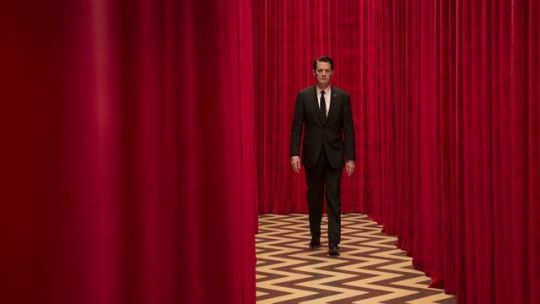
@TVGuideMagazine @Kyle_MacLachlan & @DAVID_LYNCH on the long-awaited return of #TwinPeaks.
When David Lynch and Mark Frost’s surreal Twin Peaks debuted on ABC in April 1990, the nascent World Wide Web was not yet a delivery service for instant feedback—or spoilers. Audiences found themselves frustrated yet intrigued with having to wait, week after week, to learn clues about the trippy show’s central mystery: Who bumped off small-town bad girl Laura Palmer (played by Sheryl Lee)? But even in today’s era of information overload, Showtime has unveiled only the most cryptic of teasers about the much-anticipated 18-episode revival, leaving fans waiting yet again.
Returning star Kyle MacLachlan, who revisits his lead role as unorthodox FBI Special Agent Dale Cooper, also has remained mum on what Coop’s beat will be. Is there a new murder? Is java-loving Agent Cooper still seeing apparitions? Will anyone’s deceased soul find its way into a drawer’s knob? (Yes, that actually happened—along with jazzy dance breaks, soul-stealing supernatural entities in jean jackets and lots of ebullient appreciation of doughnuts and sandwiches.) “I wish I could tell you more,” the actor says with a laugh. “I’m just incredibly excited about what people’s response is going to be.”
Here’s what’s known: It’s now 25 years after the Northwest community of Twin Peaks parsed out the demise of homecoming queen Palmer, with her last seven days rumored to provide a crucial clue to the new narrative. Lynch is directing and cowriting—with producing partner Frost—all 18 installments of the limited series. So how was it to be back in the director’s chair? “Close to heaven on Earth,” says Lynch (below, with the late Miguel Ferrer). “It’s like a feature film divided into parts, so in order for it to hold together, it should be [made] by the same bunch.”
In fact, fan faves such as Mädchen Amick (Shelley), Sherilyn Fenn (Audrey), Kimmy Robertson (Lucy), Harry Goaz (Deputy Andy), Dana Ashbrook (Bobby) and James Marshall (James) are all back. “We’d see each other, and within seconds it’d be like no time had passed at all,” says Lynch, who also reprises his role as comically hard-of-hearing FBI Chief Gordon Cole. Plus, a bevy of new faces in secret roles adds star power to the 217-person cast, including Jennifer Jason Leigh, Naomi Watts, Richard Chamberlain, Ashley Judd and Laura Dern.
This incarnation also marks a TV milestone: The first two parts are making their debut this month at the Cannes Film Festival, the first time in the fest’s 70 years that series television will be shown alongside glitzy gala movie premieres.
“I love revisiting the world and the characters of Twin Peaks,” Lynch says, noting the reboot might not all be set in the town we once knew. Given the various celebrations and fan sites in the show’s honor, so do many viewers. How good is your recall on Twin Peaks?
Here’s your ultimate A-to-Z guide to the seminal drama—including some cool trivia. Cherry pie and cup of joe optional. (Additional reporting by Jeff Pfeiffer)
Angelo Badalamenti The American composer nabbed a Best Pop Instrumental Grammy in 1991 for Twin Peaks’ haunting main theme. Another fun fact: He’s scored six of Lynch’s films and even has a small role in one of them: 2001’s Mulholland Drive.
BOB, aka Killer BOB This evil ghoul from the supernatural realm (Frank Silva, left) possessed Laura’s tortured dad, Leland Palmer (Ray Wise), and eventually, per the final moments of the ABC series, Agent Cooper. Lynch cast Peaks’ set decorator Silva in the pivotal role after spotting him in a mirror’s reflection, which would later—prophetically—become BOB’s creepy visual signature.
Carlton Cuse The Bates Motel cocreator admitted, “We pretty much ripped off Twin Peaks” to capture the tone of the Psycho prequel. Imitation is the sincerest form of flattery!
Diane Keaton The Oscar-winning actress directed the not-very-well-received Season 2 episode “Slaves and Masters,” which wrapped up shady businessman Ben Horne’s (Richard Beymer) bizarre delusion that he was a Civil War hero.
Emmys Peaks won a pair of trophies (for costuming and editing) but was nominated for a whopping 18 total, including drama series, leading actor (MacLachlan), leading actress (Piper Laurie as Catherine Martell, the town’s sullen saw mill proprietor) and supporting actress (Fenn, as teenage seductress Audrey Horne).
Fire Walk With Me The maligned 1992 big-screen prequel film—which has since developed nearly as much of a cult following as the series—starred Lynch, Kiefer Sutherland and singer Chris Isaak as agents investigating the murder of Teresa Banks (the show’s other initial murder case) and tied into the last week of Laura Palmer’s short life.
Great Northern Now known as the Salish Lodge and often flocked to by superfans, the rustic inn seen in the lush opening credits has been renovated into a chic resort and spa that overlooks the Snoqualmie Falls near Seattle.
Horne’s Department Store Audrey’s job at her dad’s retail outlet in Season 1 led from her becoming a swoony Lolita-type into a full-fledged spy, infiltrating his secret brothel after discovering that salesgirls were being lured into prostitution. Scandalous!
Invitation to Love The faux soap opera watched by several Peaks characters often mimicked the series’ own storylines, including
one involving a twin cousin. (Lee also played Laura Palmer’s more demure, brunette cousin, Maddy Ferguson.)
Johnson, Shelley After auditioning for the role of winsome high schooler Donna (played by Lara Flynn Boyle, who is not returning for the revival), newcomer Amick (now starring on Riverdale) so wowed the producers that they created the role of put-upon Double R Diner waitress Shelley just for her. She quickly became adored by fans.
Kiana Lodge The Poulsbo, Washington, locale was used for the Great Northern’s interior shots and as the Blue Pine Lodge, which was a residence shared by Catherine, her goofy fisherman husband, Pete (Jack Nance), and the sultry Josie (Joan Chen), a Chinese émigré with a dodgy past who famously kept a low profile in the industrial township.
Log Lady The recently departed Catherine E. Coulson’s memorably deadpan mystic—who shared a very special connection to her beloved wood—helped Cooper by giving him clues throughout Laura’s murder investigation. The Log Lady (seen right) was famously spoofed in an episode of the Rob Morrow series Northern Exposure.
Man from Another Place, The As the key resident of Cooper’s dream-induced Red Room, Michael J. Anderson’s scary-cool “dancing dwarf” spoke in backward riddles and proclamations. (Our favorite: “That gum you like is going to come back in style.”) He later inspired a memorable bit on The Simpsons.
Northwest Passage This was the original name of the pilot script written by Lynch and co-creator Frost. Not as catchy!
One-Eyed Jacks Owned by Ben Horne and run by madam Blackie O’Reilly (Victoria Catlin), this casino was best known for peddling drugs and hookers and, most importantly, for being one of the last places its young employee Laura Palmer was seen alive.
Project Blue Book Agent Cooper was briefed on this real-life 1950s–1960s secret probe into UFOs conducted by the U.S. government, which he was told included activity around the perimeter of Twin Peaks—hence all the ghostly goings-on.
Queen of Diamonds The famous playing-card royal served as inspiration for Audrey’s outfit at One-Eyed Jacks on her first night as a new hostess…which almost ends with Audrey’s being “broken in” by the owner, who is (gasp) her father!
Roadhouse The show’s biker bar hosted several clandestine rendezvous, as well as Cooper’s meeting with the Giant (the main figure in Cooper’s many dream states), the ill-fated Miss Twin Peaks pageant and musical performances by Julee Cruise’s ethereal house chanteuse (who also sings Peaks’ main theme, “Falling”).
Silent curtain runners High-strung town weirdo Nadine (Wendy Robie) served as its resident inventor too, including this unusual solution for the screech heard when opening draperies.
TV Guide Magazine Twin Peaks placed No. 20 in our 2004 countdown of TV’s Top 25 Cult Shows. (Yes, we know it should have been higher!)
Uproar What happened when fans didn’t find out who killed Laura in the Season 1 finale or even the Season 2 premiere. BOB’s deadly deed was finally revealed in the November 10, 1990, episode, but by then, the low ratings proved more lethal than he was.
Violence Despite the fact the primetime show was on a broadcast network shackled with standards-and-practices regulations, eyebrows were routinely raised for its unflinching portrayals of domestic abuse, electroshock torture and, indelibly, the signature image of Laura Palmer nestled in a body bag.
Wrapped in Plastic This same image in the show inspired the title of rocker/devoted fan Marilyn Manson’s 1994 song about dysfunction, which also samples Laura’s screams from the series finale. A meta treat for fans.
X-Files Before the truth was out there, David Duchovny (left)—then dating actress Robertson, who plays baby-voiced police secretary Lucy—made his television debut portraying trans FBI agent Denise Bryson.
Yamaguchi, Fumio The actor credited with playing Season 2’s mysterious Japanese real estate investor “Mr. Tojamura” turned out to be a fake! All along, it was series regular Piper Laurie’s believed-to-be-dead Catherine in full-on Mission: Impossible–level disguise. Had us fooled!
Zen It proved to be the preferred mental state of dogged crime fighter Agent Cooper, whether he was calmly dictating into his prized tape recorder or hanging upside down to meditate. Will he still be as cool 25 years later?
Twin Peaks, Series Return, Sunday, May 21, 9/8c, Showtime
link (TP)
0 notes
Text
Camelot with Mathew Hannibal Butler
This week we chat with Matthew Hannibal Butler about which of life's truths can be gleaned from the Kennedy-favourite musical - Camelot!
"A 1993 review in The New York Times commented that the musical "has grown in stature over the years, primarily because of its superb score ... [which] combined a lyrical simplicity with a lush romanticism, beautifully captured in numbers like 'I Loved You Once in Silence' and 'If Ever I Would Leave You.' These ballads sung by Guenevere and Lancelot are among the most memorable in the Lerner-Loewe catalogue. King Arthur supplies the wit, with songs like 'I Wonder What the King Is Doing Tonight.'"
Listen to Matthew's Podcast here: thatsnotcanon.com/deliciouswordsandwichpodcast
FURTHER READING:
Camelot (musical)
Camelot (film)
Alan Jay Lerner
Frederick Loewe
The Once and Future King.
Kennedy Administration
Julie Andrews
Richard Burton
Robert Goulet
https://open.spotify.com/album/5Fp6Y3gNufwzUeEBxuOZpo
https://music.apple.com/us/album/camelot-original-1960-broadway-cast-recording/158476378
Camelot: The Musical, A History By Matthew Hannibal Butler
By Alan Jay Lerner and Frederick Lowe
A History By Matthew Hannibal Butler
Camelotis an oft forgotten and underrated musical masterpiece by the iconic duo Lerner and Lowe, first premiering with Sir Richard Burton as King Arthur and Dame Julie Andrews as Guinevere, with Robert Goulet as the dashing Sir Lancelot. They did not have these titles when it premiered in 1960 at the Majestic Theatre, but I thought it was a nice touch considering their royal counterparts.
Camelotis inspired by the definitive Arthurian novel The Once and Future King by T.H. White, a four book saga consisting of the iconic Sword in the Stone,The Witch in the Woods, The Ill-Made Knight and finally The Candle in the Wind. The musical mainly focuses on the events of this final instalment detailing with the last weeks of Arthur’s reign, the machinations and ultimately revolts by his son Mordred, Guinevere and Lancelot’s demise, and the tragic king’s final reflections of right and wrong. For all its levity, what I adore about this musical’s story is its choice to focus on one of the greatest tragedies in western folklore: The Fall of Camelot.
As you can tell, I am an Arthurian lore fanatic, and T.H. White’s book, in my opinion, is the best classic interpretation of King Arthur. A tragedy of this musical is, in my opinion, that it did not inspire more interest in White’s marvellous book.
Lerner and Lowe, as well as Camelot’s original director Moss Hart, were all coming from the chaotic universal success of their musical My Fair Lady and their musical film Gigi. Tensions and stakes were high. ‘Twas the classic tale of ‘What’s next?’ after tremendous success. Hart and Lerner decided upon T.H. White’s quintessential fantasy published in 1958 for their next musical. For a very small background on White, he wrote the bulk of the series in Ireland as a conscientious objector of the second World War between 1938 and 1941, thus writing a distinctly anti-war, anti-violent story engrained with western identity. To adapt this at this time, just before Kennedy’s escalation of the Vietnam War is a right proper noble gambit worthy of Arthur, let me tell you.
Frederick Lowe initially had no interest in the project, but agreed to write the score on the condition that, if it went badly, it would be his last. This do or die spirit, I found, reigned throughout the whole production, in spite of everything, and made it the suitably tragic triumph that it became. There were several problems plaguing the production, not least of which was Lerner’s wife leaving him during its writing, causing him to seek medical attention. I can’t help but surmise this informs one of the most poignant moments of the play, when Arthur realises the feelings shared between Lancelot and Guinevere and he thus soliloquises about his love for his kingdom, his purpose and in truth his friends will ensure that they will together nonetheless prevail through all challenges.
During its initial previews, it overran drastically. It was supposed to be two hours and forty minutes, instead it clocked in at a casual four and a half hours with the curtain coming down at twenty to 1 in the morning. Lerner later noted, “Only Tristan and Isolde equalled it as a bladder endurance contest”. In spite of this trial, positive reviews still generally prevailed though with an insistence much work needed yet. With drastic editing to be done, Lerner was hospitalised for three weeks with a bleeding ulcer, then Hart tagged into the hospital just as Lerner tagged out with his second heart attack.
Cutting it down became a stubborn quest, for Lerner did not want to make dramatic decisions without Hart. Alas, Jose Ferrer of Cyrano de Bergerac fame was unable to step in, and so it goes as Lerner wrote: “God knows what would have happened had it not been for Richard Burton.” He accepted cuts and changes all while radiating faith and geniality to calm the fears of the cast. A King off and on the stage. Meanwhile, ever the Queen, last minute changes were so dramatic that literally at the last minute before the New York preview Julie Andrews was given the iconic number “Before I Gaze At You Again”, simply remarking “Of course, darling, but do try to get it to me the night before”.
With Hart returned, literally and figuratively, cuts and edits continued. The New York critics’ reviews of the original production were mixed. However, My Fair Lady’s fifth anniversary approached and Ed Sullivan wanted to do a tribute segment on his show. Lerner and Lowe chose to mainly perform highlights from Camelot on the show, and so it was their new show achieved an unprecedented advance sale of three and a half million dollars.
Now that’s perseverance, even when things are going haywire, you raise the stakes even higher! This served also to make Robert Goulet a household name with his signature ballad, “If Ever I would Leave You” becoming the Once and Future Belter.
Camelot had its initial run. In such time, it gained many an award, including four Tony Awards, with Richard Burton for Best Leading Actor, naturally Best Scenic Design and Best Costume Design, with Franz Allers for Best Conductor and Musical Director and finally with Julie Andrews being ROBBED and fetching a nomination for Best Leading Actress.
Robert Goulet became a STAR with appearances on the Danny Thomas and Ed Sullivan Shows, and the stellar, and frankly best, original cast recording became a favourite bedtime listening for President John F. Kennedy, who was Lerner’s classmate at Harvard University. His favourite lines from the final reprise of the titular song became well-documented, and forever associated Camelot, with all its idealism and sheen, with the Kennedy Administration.
Small sidenote, to enjoy this tremendous score, the best buck starts and ends with the original cast soundtrack.
Alas, the obstacles encountered in producing Camelot were hard on the creative partnership of Lerner and Loewe, the show turning out to be one of their last collaborations. Camelot was indeed Hart’s last Broadway show, dying of a heart attack on December 20, 1961.
Since the original production, Richard Burton reprised his role as Arthur with Christine Ebersole as Guinevere and Richard Muenz as Lancelot. Then ‘twas revived in 1981 with Richard Harris as Arthur, Meg Bussert as Guinevere, Muenz once more as Sir Lancelot. This version can be found three parts on the YouTubes. Harris starred in the tragic for all the wrong reasons film, but proved he was the jewel in that particular crown for he took the show to tour nationwide with Muenz. A curious Broadway Revival also ran in 1993 with Robert Goulet now King Arthur.
There was then in 2007 Michael York as King Arthur, Rachel York, no relation, as Guinevere and the disgraced James Barbour ironically as Lancelot.
Alas, I have not been able to see Michael York as King Arthur, as that is inspired casting.
The final production I have had the honour of seeing was in 2008, since alas taken down from the YouTubes, where the New York Philharmonic presented five semi-staged concerts of Camelot with Gabriel Byrne as a more contemplative and subdued King Arthur, Marin Mazzie as Guenevere, and Nathan Gunn as Lancelot. What made this production stand out for me was it didn’t overdo anything, as this musical can oft be overwhelming, and also it featured Christopher Lloyd as Pellinore, a role I feel he was destined to do. Oh, if only they had done a spin-off adventure story starring Christopher Lloyd as Pellinore in his endless hunt for the Questing Beast.
All in all, the history of Camelot I think reflects it perfectly for better or ill. It is not a universally appealing production. In my opinion, it was never destined to be, considering its content and style. It is very chatty, pontificating and philosophical, yet with its simply magic score, a lush fantastical world, sweeping tragic romance and swashbuckling glory, when it connects with people it connects as firmly as the sword in the stone.
Like us on Facebook! Follow us on Twitter! Support us on Patreon!
Email us: [email protected]
Visit our home on the web thatsnotcanonproductions.com
Our theme song and interstitial music all by the one and only Benedict Braxton Smith. Find out more about him at www.benedictbraxtonsmith.com
#broadway#nyc#music#musicals#jazz#overture#diva#lifelessons#dance#choreography#new york#theatre#performance#stage#thespian
0 notes
Text
VAN DYKE & COMPANY
December 9, 1976 (S1;E9)

Directed by John Moffitt
Written by George Burditt, Garry Ferrier, Ken Finkelman, Mitch Markovitz, Don Novello, Pat Proft, Leonard Ripps, Mickey Rose, Aubrey Tadman, Paul Wayne, Dick Van Dyke

Dick Van Dyke (Himself, Host / Various Characters) was born Richard Wayne Van Dyke in West Plains, Missouri, in 1925. Although he'd had small roles beforehand, Van Dyke was launched to stardom in the 1960 Broadway musical Bye Bye Birdie, for which he won a Tony Award. He reprised his role in the 1963 film. He has starred in a number of other films throughout the years including Mary Poppins (1964) and Chitty Chitty Bang Bang (1968). From 1961 to 1966 he played TV writer Rob Petrie in “The Dick Van Dyke Show.” He also starred in “The New Dick Van Dyke Show” (1971-74), “Van Dyke & Company” (1976), and “Diagnosis Murder” (1993-2001).
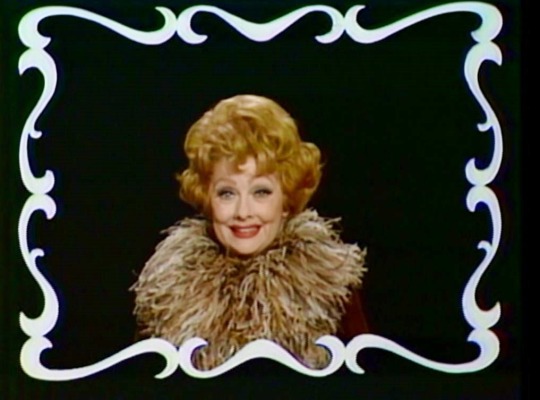
Lucille Ball (Herself, Various Characters) was born on August 6, 1911 in Jamestown, New York. She began her screen career in 1933 and was known in Hollywood as ‘Queen of the B’s’ due to her many appearances in ‘B’ movies. With Richard Denning, she starred in a radio program titled “My Favorite Husband” which eventually led to the creation of “I Love Lucy,” a television situation comedy in which she co-starred with her real-life husband, Latin bandleader Desi Arnaz. The program was phenomenally successful, allowing the couple to purchase what was once RKO Studios, re-naming it Desilu. When the show ended in 1960 (in an hour-long format known as “The Lucy-Desi Comedy Hour”) so did Lucy and Desi’s marriage. In 1962, hoping to keep Desilu financially solvent, Lucy returned to the sitcom format with “The Lucy Show,” which lasted six seasons. She followed that with a similar sitcom “Here’s Lucy” co-starring with her real-life children, Lucie and Desi Jr., as well as Gale Gordon, who had joined the cast of “The Lucy Show” during season two. Before her death in 1989, Lucy made one more attempt at a sitcom with “Life With Lucy,” also with Gordon, which was not a success and was canceled after just 13 episodes.

The Lockers was a male lock dance troupe first known as the Campbell Lockers formed by Toni Basil and Don Campbell in 1971. They were pioneers of street dance. They appeared on “The Tonight Show,” “Saturday Night Live,” and “What's Happening!!” This is their final TV appearance.
Andy Kaufman (Andy) was a performance artist and comedian. He is best known for playing Latka Gravas on the TV sitcom “Taxi.” Andy appeared in movies, on Broadway, did a one man show at Carnegie Hall, enjoyed a brief professional wrestling career, and performed in concerts nationwide. He died in 1984 of lung cancer.
Kaufman is not credited in the opening title sequence nor in the closing voice over credits. This was likely to lend veracity to his continual habit of ‘crashing’ the show and interrupting Van Dyke's guests.
L.A. Mime Company
John Wheeler (Mr. Haley, Network Executive) was in the New York stage productions of Wonderful Town (also on TV in 1958) and Sweet Charity (also the film 1969). He was seen opposite Lucille Ball as Judge Breghoff in the movie Mame. He appeared on one episode of “Here's Lucy” (S6;E16) in 1974. Coincidentally, he played Fred Mertz in the TV film “Lucy and Desi: Before the Laughter” in 1991.
Barry Van Dyke (Honey #2 / Helen's Paramour) was Dick Van Dyke's son born in July 1951, just two weeks after Lucie Arnaz. Like Lucie, he made his screen debut on his parent's TV show in 1962 and went on to larger roles in subsequent series'. Probably his most famous of those roles was as Steve Sloan in “Diagnosis Murder” (1993-2001).
It is a bit odd that Van Dyke's real son is playing (who is inferred to be) his male lover in the “Honey, I'm Home” sketch.
Judy Von Wormer had played one of the singers in “Lucy, The Co-Ed” (HL S3;E6) in 1970.
Brian Bruno and Barney, The Paul Family
Stu Nahan (Announcer)

“Van Dyke & Company” was a short-lived variety show that aired on NBC from September 20, 1976 to December 30, 1976. A pilot episode was shot in October 1975, but the series did not debut for another 11 months.

In a 1965 appearance on “Art Linkletter's House Party” Lucille Ball said that “The Dick Van Dyke Show” was her favorite television program. The series was shot at Desilu Studios. It took 11 years for Van Dyke and Ball to collaborate. This is the first time Ball and Van Dyke have acted opposite each other, although the two had appeared as guests on “Salute to Stan Laurel” in 1965.
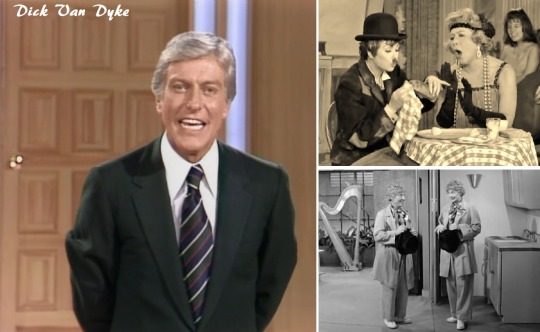
A week before her appearance on “Van Dyke & Company,” Dick Van Dyke appeared on “CBS Salutes Lucy: The First 25 Years” paying tribute to Lucy's skill at pantomime (something both were adept at and demonstrate here) from the set of his show. In 2001, Van Dyke co-hosted “I Love Lucy's 50th Anniversary Special.”

Genealogists claim that Lucy and Van Dyke are distant relatives. They are 10th cousins, once removed.
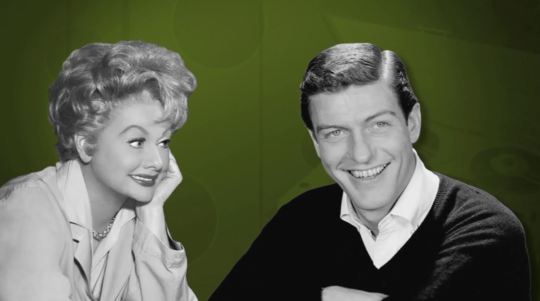
This episode of “Van Dyke & Company” was aired by MeTV on August 6, 2017 (Lucy's birthday). The entire series is available on DVD from MPI Video. Bonus features include audio from Van Dyke as a guest on “Let's Talk to Lucy,” Ball's 1964-65 radio show. For this episode, only Andy Kaufman's Elvis impersonation has been omitted, likely due to royalty restrictions.
On December 15, 1976, less than a week after this episode of “Van Dyke & Company” aired, Lucille Ball was on the dais for “The Dean Martin Celebrity Roast” of Danny Thomas.
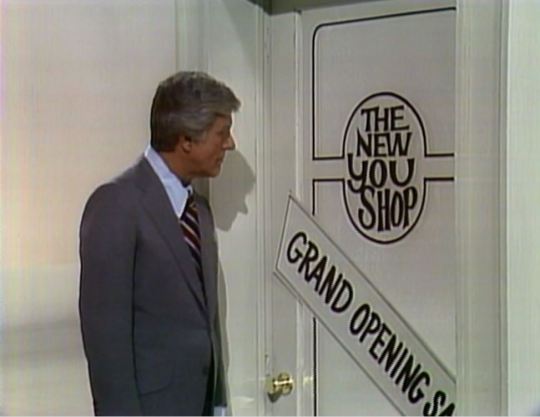
A cold open (pre-credits) has Dick paying a visit to the grand opening of “The New You Shop” staffed by Lucy, in a wordless physical comedy sketch. The premise has Lucy selling new 'body parts' (invisible and pantomimed with the help of sound effects) such as legs, chests, hands, faces, and feet.

Trying on the parts inside 'The New You Machine', something goes horribly wrong. Dick emerges with arms that scrape the ground and a hand on the end of his foot!

In Dick's monologue he demonstrates the differences in the family hour format as opposed to later time slots using a fictional show called “Honey, I'm Home.” The Family Viewing Hour was a policy established by the Federal Communications Commission (FCC) in 1975. Under the policy, each television network had the responsibility to air "family-friendly" programming during the first hour of the prime time lineup (8 to 9 pm Eastern Time). “Van Dyke & Company” occupied the ‘Family Hour’ time slot.
“Honey, I'm Home” 8pm to 9pm ('Family Hour') – Dick comes home to find his wife waiting patiently on the sofa.
“Honey, I'm Home” 9pm to 10pm – Dick comes home to find his wife kissing another man.
“Honey, I'm Home” 10pm to 11pm – Dick comes home to find the same couple looking at a road map, but the 'honey' he's come home to is the man, not the woman!
He attempts to show the audience “Honey, I'm Home” after midnight, but quickly opens and shuts the door, horrified at what he's seen (and we don't).
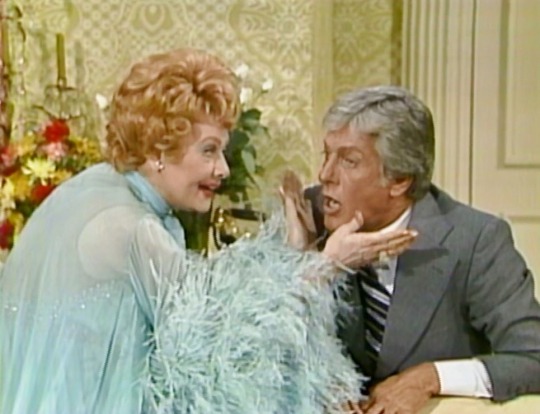
A network executive (John Wheeler) appoints Richard (Dick) to Vice President of Programming in order to get him to tell fading star Marion Lane (Lucy) that her show has been canceled. Lucy receives a big ovation from the studio audience, which indicates this may be the first segment shot, with the cold open pre-taped without a studio audience.
Marion seems to know what he's come for and quickly takes a liberal amount of tablets.
Richard: “Marion, what's that you're taking?”
Marion: “Sleeping pills.”
Richard: “Wouldn't you call that a kind of a heavy dose?”
Marion: “I'd call it an overdose.”
Turns out they were just breath mints. Still fearing the worst, Marion momentarily straddles an open window. When he finally delivers the bad news, she slaps him hard across the face, sending him careening over the divan. The sketch has a surprise twist ending with Richard being Marion's husband!

Dick is discovered chiseling a sculpture and telling the audience that he's always wanted Rudolf Nureyev as a guest. He finally got a call from the dancer to tell him that he will be appearing – on “The Gong Show.” “The Gong Show” was a low-budget amateur talent show that had only premiered on TV a few months earlier. This set-up is by way of introducing what Dick calls “the most fabulous dancers around” - The Lockers. After they perform their main act, Dick joins in, even wearing one of their costumes.
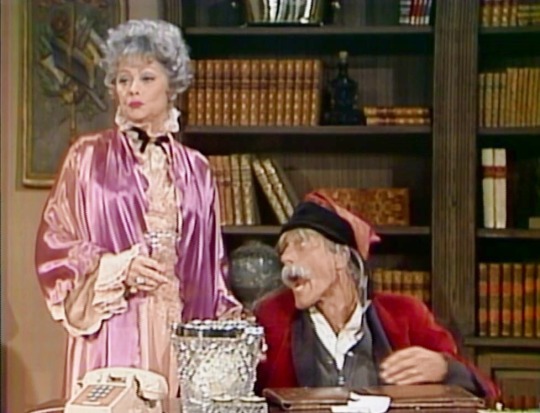
Dick and Lucy play Helen and Edgar, a couple celebrating their 40th anniversary. Edgar is 115 years old, and Helen is 75. She only married him thinking she would soon be a rich widow. Van Dyke's characterization of Edgar is reminiscent of when he played the elderly banker Mr. Dawes Sr. in Mary Poppins (1964). Helen tries everything she can think of to hasten her inheritance.
She cracks a champagne bottle on his head. Nothing.
She tries to guillotine him while blowing out the candles on their anniversary cake. It misses.
She gives him a big anniversary kiss with an electrified wire. He is energized by it.
She offers him some fresh air out on the balcony (which they don't have) and pushes his wheelchair headlong out the terrace doors. Helen thinks she's finally succeeded in offing him, but he comes rolling through the opposite door a few moments later, his wheelchair now a mash-up of a trash can and mobility device.
Helen finally slips Edgar a mickey that does the trick – but first he calls up the newspaper to place his own obituary. The sketch has a twist ending with the entrance of Helen's paramour (Barry Van Dyke), who may be trying to do the same thing to her!

Dick and Lucy are having some banter as themselves when Andy Kaufman arrives with his tape player wanting to be on the show. Although Dick says that Andy should just go away, Lucy says that she's seen Andy on the show before, and that he always interrupts guests, and they've all been very good sports about it. Lucy says that she just doesn't happen to be one and swiftly exits. Dick says Andy has previously insulted Carl Reiner (S1;E4), Hal Linden (S1;E5), John Denver (S1;E3), and now Lucy. Dick exits to find a security guard.
Alone with the audience, Kaufman starts with an imitation of “Sanford and Son” saying (in his inimitable way, with clipped diction and seemingly incapable of imitating Redd Fox)
“Elizabeth. I am coming to join you.”
He then tackles 'the Fonzie' from “Happy Days”:
“Eh. Eh. Sit on it you stupid nerd.”
Again without a trace of intonation or nuance. Finally he does a sped up Elvis Presley imitation. [This song has been omitted from the DVD release, probably due to song royalty fees. It is apparent that it has been edited out because the sketch on video quickly fades out and Kaufman had not yet used the tape recorder he brought onstage at the start.]

In another silent pantomimed sketch (the second of the show), Lucy and Dick play tourists taking photographs in a Tropical Forest.

To get the perfect photo, Lucy and Dick virtually destroy the forest, breaking off twigs, pulling up flowers, and cutting down trees. Luckily, their picnic hamper comes equipped with a hacksaw and dynamite!

In a final act of desecration, Lucy bulldozes the entire area clear, turning the lush setting...

...into a parking lot!
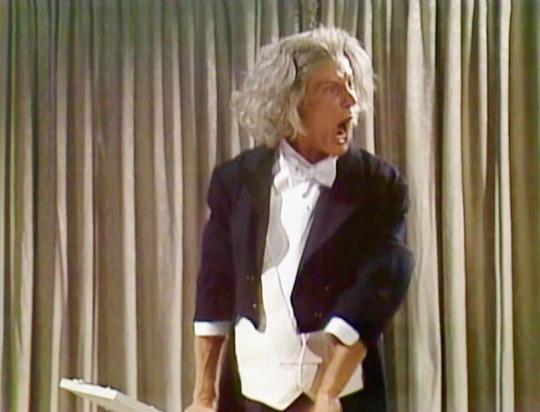
Dick plays a long-haired Maestro (in sneakers) but instead of an orchestra, he conducts dancers. When the dancers go from classical to modern, the Maestro nearly gives up trying to control them, but when the music turns to a Broadway sound, even he joins in.
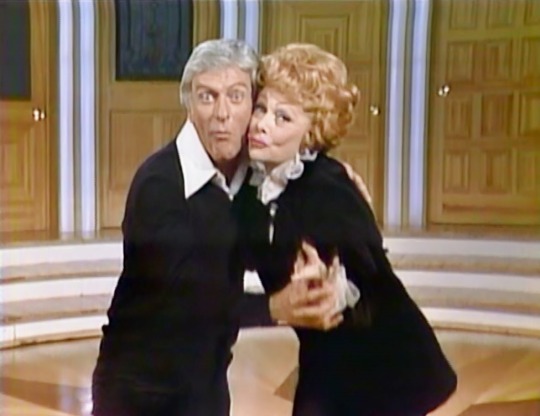
In the closing, Dick sings “You Make It So Easy” to Lucy. The two do some simple, yet funny, dance steps as well.
This Date in Lucy History – December 9

"Lucy and the Military Academy" (TLS S2;E10) – December 9, 1963

"Guess Who Owes Lucy $23.50" (HL S1;E11) – December 9, 1968

“An All-Star Party for Lucille Ball” - December 9, 1984
#Van Dyke & Company#Dick Van Dyke#Lucille Ball#Variety Show#NBC#1976#The Lockers#John Moffitt#Andy Kaufman#Barry Van Dyke#John Wheeler#L.A. Mime Company#Judy Von Wormer#Stu Nahan#TV
9 notes
·
View notes
Text
Jeffrey Epstein Taught at Dalton. His Behavior Was Noticed.
What would you do if you were a private school teacher and and saw a new male teacher flirting with the girls, spending a lot of time with girls, spent time with some of the girls outside school, and was the only teacher attending high school parties: (1) nothing, (2) speak with him about these issues, or (3) inform the principal? Why? What are the ethics underlying your decision?
In the mid-1970s, students at one of New York’s most esteemed prep schools were surprised to encounter a new teacher who pushed the limits on the school’s strict dress code, wandering the halls in a fur coat, gold chains and an open shirt that exposed his chest.
The teacher, Jeffrey Epstein, would decades later face allegations that he coerced and trafficked teenagers for sex. At the Dalton School on the Upper East Side, some students saw Mr. Epstein as an unusual and unsettling figure, willing to violate the norms in his encounters with girls.
Eight former students who attended the prestigious school during Mr. Epstein’s short tenure there said that his conduct with teenage girls had left an impression that had lingered for decades. One former student recalled him showing up at a party where students were drinking, while most remembered his persistent attention on the girls in hallways and classrooms.
“I can remember thinking at the time, ‘This is wrong,’” said Scott Spizer, who graduated from Dalton in 1976.
None of the female students who spoke to The New York Times in recent days remembered Mr. Epstein making unwanted physical contact with them, and he has not been accused of any crimes related to his time at the school.
But a few students said they had been discomfited by a close relationship he had with one of their female peers, a concern that had escalated so much that one of them had raised the issue then to a school administrator.
Dalton has long been known for its rigorous academics, repeatedly ranking among the nation’s best private schools while drawing the sons and daughters of New York titans of finance, media and art. Among the alumni are the CNN journalist Anderson Cooper, the actress Claire Danes and the comedian Chevy Chase.
Mr. Epstein’s time at Dalton was brief, and an administrator said it ended in a dismissal. While Mr. Epstein later developed a reputation in the world of finance as a man of brilliance — “He was a Brooklyn guy with a motor for a brain,” New York magazine wrote in a 2002 profile — the administrator told The Times that he had dismissed Mr. Epstein for poor performance.
But the accounts offer a window into Mr. Epstein’s early adulthood, before he developed extensive private wealth that allowed him to acquire a $56 million mansion just a mile south of the Dalton School. It was there, prosecutors said this week, that Mr. Epstein and his employees paid “numerous” underage girls to engage in sex acts with him.
Federal prosecutors in New York charged Mr. Epstein, 66, with sex trafficking on Monday. He has pleaded not guilty. His lawyer did not respond to a request for comment.
Officials with the Dalton School also did not respond to requests for comment, but news of the charges has led alumni to reconnect and swap memories of a young teacher who sometimes seemed to defy the expectations of behavior for an authority figure.
Mr. Epstein from the 1976 yearbook at the Dalton School.
A school in turmoil
Like much of the rest of the country, the Dalton School in the 1970s was in the midst of a culture war.
The school, which had been a progressive haven for the children of artists and writers, was undergoing a shift under a new headmaster. Donald Barr, the father of Attorney General William Barr, came in as a disciplinarian focused on beefing up the academics of the school, and on enforcing a strict code of conduct.
In a school known for creativity, administrators had prohibited denim jeans and “bizarre and eccentric costumes.” If Mr. Barr caught students using marijuana, he would often send them to therapy as a condition of staying in the school. He himself described his leadership style as “by ukase,” using the Imperial Russian term for an edict from the czar.
Staff members would sometimes turn students away from their morning classes; girls for skirts that were too short, and boys for hair that was too long.
Some students and parents balked at the constraints. Still, the school continued to draw families of fame. Around the years of Mr. Epstein’s tenure, records show the student roster included Prudence Murdoch, the daughter of the media mogul Rupert Murdoch; the fashion designer Jill Stuart; and several future actresses, including Jennifer Grey, Tracy Pollan and Maggie Wheeler.
While Mr. Barr was strict on the school culture, he made it a point to hire teachers from unconventional backgrounds, recalled Susan Semel, a social studies teacher at Dalton from the 1960s to 1980s who later wrote a book on the history of the school.
“Barr didn’t care about credentials as long as you were interesting and knew your stuff,” Ms. Semel said.
In February 1974, Mr. Barr had announced that he was resigning as headmaster, protesting the meddling by the board of trustees, but that he would stay on until the end of the school year. It is unclear whether Mr. Barr hired Mr. Epstein during that time.
Mr. Epstein, from Brooklyn, was just 21 when he joined the faculty at Dalton, arriving without a college degree. The school’s student newspaper reported in September 1974 that he was starting that year as a math and physics teacher.
The next year, he participated in a school musical for parents and faculty, and he appeared in later editions of the paper as the coach of the Dalton Tigers math team until the beginning of 1976.]
The school had new leadership under Gardner Dunnan, who tentatively explored a rollback of some of its strict rules. Mr. Dunnan announced in early 1975 a policy that would allow denim inside the building, although students were still told to be neat and clean.
In the years since, however, Mr. Dunnan has faced allegations of his own inappropriate conduct. A former Dalton student said in a lawsuit that she had been invited to live with Mr. Dunnan at age 14, and had suffered repeated sexual assaults under his care. Mr. Dunnan denied the allegations. The lawsuit was dropped, but the woman’s lawyer, Mariann Meier Wang, said she intended to refile it.
‘Everyone talked about it’
At Dalton, Mr. Epstein was known as a charismatic, young teacher who at times acted more like a friend than an authority figure to students.
The urban school inside a brick building did not have outdoor spaces to congregate, so students gathered in halls and in rooms that spanned the building’s many stories. That included lab rooms dedicated to various subjects, providing a more informal and intimate setting for students to get help outside of class from their teachers.
It was in one of these lab rooms that Leslie Kitziger, who graduated from Dalton in 1978, first met Mr. Epstein.
Ms. Kitziger remembered him as a flamboyant dresser and lively jokester. “He was goofy and like a kid himself,” she recalled.
Ms. Kitziger said she became close to Mr. Epstein at a time when she was struggling at home with her parents’ divorce. She confided in him, and remembered him as caring and attentive.
“He listened,” Ms. Kitziger recalled. “I was a 14-year-old and he helped me through a time when there wasn’t anybody else to talk to. I felt like he really cared that I was having a rough go.”
She stressed that Mr. Epstein was always professional with her.
But other students, including Millicent Young, a graduate of the school’s 1976 class, saw things differently. Ms. Young never had Mr. Epstein as a teacher, but the school was small enough that she would spend time around him. She recalled observing Mr. Epstein flirting with the girls at the school, which drew her attention because it was so different than how other teachers behaved.
“There was a real clarity of the inappropriateness of the behavior — that this isn’t how adult male teachers conduct themselves,” Ms. Young said.
Mr. Spizer, the fellow student who graduated the same year, said he had a clear recollection of disliking Mr. Epstein because he was spending so much time with girls in the school.
Some other students spoke on condition of anonymity, fearing retribution from Mr. Epstein. One recalled that he had made efforts to spend time with her outside the school, and she remembered raising concerns about Mr. Epstein’s conduct with another student to Mr. Dunnan. An attorney for Mr. Dunnan said the former headmaster had not been aware of any concerns about Mr. Epstein’s conduct at the school.
Another student, who also requested anonymity, fearing reprisals from Mr. Epstein, recalled seeing Mr. Epstein at a high school party in an apartment on the Upper East Side where students were drinking and socializing. Mr. Epstein was the only teacher there, which raised eyebrows among the students.
“It was weird,” said another former student, Paul Grossman, a 1978 graduate who did not attend the party but remembered hearing about it. “Everyone talked about it,” he said.
Peter Thomas Roth, who graduated from Dalton in 1975 and later founded a cosmetics and skin care company with his name, said Mr. Epstein was such a “brilliant” teacher that his father later hired him to tutor Mr. Roth in statistics.
Mr. Roth said he never heard of any rumors about misconduct at the school.
“He was like your friend, you know?” Mr. Roth said.
But Peter Branch, who was an interim headmaster after Mr. Barr and later the head of the high school, was not as fond of Mr. Epstein’s teaching. He said that he did not recall anyone raising concerns to him about Mr. Epstein’s conduct with students, but that he had heard concerns from the faculty about Mr. Epstein’s teaching, and eventually determined that the teacher needed to go.
“Epstein was a young teacher who didn’t come up to snuff,” Mr. Branch said. “So, ultimately, he was asked to leave.”
Mr. Roth, the former student, said he and Mr. Epstein did not stay in close touch. But a couple of years ago, he got an invitation to Mr. Epstein’s home after running into him.
It was the only time he had been invited to Mr. Epstein’s palatial townhouse, he said, and so he went over for an afternoon gathering. Everyone present was in their 40s and 50s, Mr. Roth said, and there was no untoward behavior.
0 notes
Text
Epstein’s Behavior as a Teacher in the ’70s Drew Notice https://www.nytimes.com/2019/07/12/nyregion/jeffrey-epstein-dalton-teacher.html
Jeffrey Epstein Taught at Dalton. His Behavior Was Noticed.
Some students at the esteemed Manhattan prep school recall that Mr. Epstein, now charged with sex trafficking, was willing to violate norms in his encounters with girls.
By Mike Baker and Amy Julia Harris | Published July 12, 2019 | New York Times | Posted July 13, 2019 |
In the mid-1970s, students at one of New York’s most esteemed prep schools were surprised to encounter a new teacher who pushed the limits on the school’s strict dress code, wandering the halls in a fur coat, gold chains and an open shirt that exposed his chest.
The teacher, Jeffrey Epstein, would decades later face allegations that he coerced and trafficked teenagers for sex. At the Dalton School on the Upper East Side, some students saw Mr. Epstein as an unusual and unsettling figure, willing to violate the norms in his encounters with girls.
Eight former students who attended the prestigious school during Mr. Epstein’s short tenure there said that his conduct with teenage girls had left an impression that had lingered for decades. One former student recalled him showing up at a party where students were drinking, while most remembered his persistent attention on the girls in hallways and classrooms.
“I can remember thinking at the time, ‘This is wrong,’” said Scott Spizer, who graduated from Dalton in 1976.
None of the female students who spoke to The New York Times in recent days remembered Mr. Epstein making unwanted physical contact with them, and he has not been accused of any crimes related to his time at the school.
But a few students said they had been discomfited by a close relationship he had with one of their female peers, a concern that had escalated so much that one of them had raised the issue then to a school administrator.
Dalton has long been known for its rigorous academics, repeatedly ranking among the nation’s best private schools while drawing the sons and daughters of New York titans of finance, media and art. Among the alumni are the CNN journalist Anderson Cooper, the actress Claire Danes and the comedian Chevy Chase.
Mr. Epstein’s time at Dalton was brief, and an administrator said it ended in a dismissal. While Mr. Epstein later developed a reputation in the world of finance as a man of brilliance — “He was a Brooklyn guy with a motor for a brain,” New York magazine wrote in a 2002 profile — the administrator told The Times that he had dismissed Mr. Epstein for poor performance.
But the accounts offer a window into Mr. Epstein’s early adulthood, before he developed extensive private wealth that allowed him to acquire a $56 million mansion just a mile south of the Dalton School. It was there, prosecutors said this week, that Mr. Epstein and his employees paid “numerous” underage girls to engage in sex acts with him.
Federal prosecutors in New York charged Mr. Epstein, 66, with sex trafficking on Monday. He has pleaded not guilty. His lawyer did not respond to a request for comment.
Officials with the Dalton School also did not respond to requests for comment, but news of the charges have led alumni to reconnect and swap memories of a young teacher who sometimes seemed to defy the expectations of behavior for an authority figure.
A school in turmoil
Like much of the rest of the country, the Dalton School in the 1970s was in the midst of a culture war.
The school, which had been a progressive haven for the children of artists and writers, was undergoing a shift under a new headmaster. Donald Barr, the father of Attorney General William Barr, came in as a disciplinarian focused on beefing up the academics of the school, and on enforcing a strict code of conduct.
In a school known for creativity, administrators had prohibited denim jeans and “bizarre and eccentric costumes.” If Mr. Barr caught students using marijuana, he would often send them to therapy as a condition of staying in the school. He himself described his leadership style as “by ukase,” using the Imperial Russian term for an edict from the czar.
Staff members would sometimes turn students away from their morning classes; girls for skirts that were too short, and boys for hair that was too long.
Some students and parents balked against the constraints. Still, the school continued to draw families of fame. Around the years of Mr. Epstein’s tenure, records show the student roster included Prudence Murdoch, the daughter of the media mogul Rupert Murdoch; the fashion designer Jill Stuart; and several future actresses, including Jennifer Grey, Tracy Pollan and Maggie Wheeler.
While Mr. Barr was strict on the school culture, he made it a point to hire teachers from unconventional backgrounds, recalled Susan Semel, a social studies teacher at Dalton from the 1960s to 1980s who later wrote a book on the history of the school.
“Barr didn’t care about credentials as long as you were interesting and knew your stuff,” Ms. Semel said.
In February 1974, Mr. Barr had announced that he was resigning as headmaster, protesting the meddling by the board of trustees, but that he would stay on until the end of the school year. It is unclear whether Mr. Barr hired Mr. Epstein during that time.
Mr. Epstein, from Brooklyn, was just 21 when he joined the faculty at Dalton, arriving without a college degree. The school’s student newspaper reported in September 1974 that he was starting that year as a math and physics teacher.
The next year, he participated in a school musical for parents and faculty, and he appeared in later editions of the paper as the coach of the Dalton Tigers math team until the beginning of 1976.
The school had new leadership under Gardner Dunnan, who tentatively explored a rollback of some of its strict rules. Mr. Dunnan announced in early 1975 a policy that would allow denim inside the building, although students were still told to be neat and clean.
In the years since, however, Mr. Dunnan has faced allegations of his own inappropriate conduct. A former Dalton student said in a lawsuit that she had been invited to live with Mr. Dunnan at age 14, and had suffered repeated sexual assaults under his care. Mr. Dunnan denied the allegations. The lawsuit was dropped, but the woman’s lawyer, Mariann Meier Wang, said she intended to refile it.
‘Everyone talked about it’
At Dalton, Mr. Epstein was known as a charismatic, young teacher who at times acted more like a friend than an authority figure to students.
The urban school inside a brick building did not have outdoor spaces to congregate, so students gathered in halls and in rooms that spanned the building’s many stories. That included lab rooms dedicated to various subjects, providing a more informal and intimate setting for students to get help outside of class from their teachers.
It was in one of these lab rooms that Leslie Kitziger, who graduated from Dalton in 1978, first met Mr. Epstein.
Ms. Kitziger remembered him as a flamboyant dresser and lively jokester. “He was goofy and like a kid himself,” she recalled.
Ms. Kitziger said she became close to Mr. Epstein at a time when she was struggling at home with her parents’ divorce. She confided in him, and remembered him as caring and attentive.
“He listened,” Ms. Kitziger recalled. “I was a 14-year-old and he helped me through a time when there wasn’t anybody else to talk to. I felt like he really cared that I was having a rough go.”
She stressed that Mr. Epstein was always professional with her.
But other students, including Millicent Young, a graduate of the school’s 1976 class, saw things differently. Ms. Young never had Mr. Epstein as a teacher, but the school was small enough that she would spend time around him. She recalled observing Mr. Epstein flirting with the girls at the school, which drew her attention because it was so different than how other teachers behaved.
“There was a real clarity of the inappropriateness of the behavior — that this isn’t how adult male teachers conduct themselves,” Ms. Young said.
Mr. Spizer, the fellow student who graduated the same year, said he had a clear recollection of disliking Mr. Epstein because he was spending so much time with girls in the school.
Some other students spoke on condition of anonymity, fearing retribution from Mr. Epstein. One recalled that he had made efforts to spend time with her outside of the school, and she remembered raising concerns about Mr. Epstein’s conduct with another student to Mr. Dunnan. An attorney for Mr. Dunnan said the former headmaster had not been aware of any concerns about Mr. Epstein’s conduct at the school.
Another student, who also requested anonymity, fearing reprisals from Mr. Epstein, recalled seeing Mr. Epstein at a high school party in an apartment on the Upper East Side where students were drinking and socializing. Mr. Epstein was the only teacher there, which raised eyebrows among the students.
“It was weird,” said another former student, Paul Grossman, a 1978 graduate who did not attend the party but remembered hearing about it. “Everyone talked about it,” he said.
Peter Thomas Roth, who graduated from Dalton in 1975 and later founded a cosmetics and skin care company with his name, said Mr. Epstein was such a “brilliant” teacher that his father later hired him to tutor Mr. Roth in statistics.
Mr. Roth said he never heard of any rumors about misconduct at the school.
“He was like your friend, you know?” Mr. Roth said.
But Peter Branch, who was an interim headmaster after Mr. Barr and later the head of the high school, was not as fond of Mr. Epstein’s teaching. He said that he did not recall anyone raising concerns to him about Mr. Epstein’s conduct with students, but that he had heard concerns from the faculty about Mr. Epstein’s teaching, and eventually determined that the teacher needed to go.
“Epstein was a young teacher who didn’t come up to snuff,” Mr. Branch said. “So, ultimately, he was asked to leave.”
Mr. Roth, the former student, said he and Mr. Epstein did not stay in close touch. But a couple of years ago, he got an invitation to Mr. Epstein’s home after running into him.
It was the only time he had been invited to Mr. Epstein’s palatial townhouse, he said, and so he went over for an afternoon gathering. Everyone present was in their 40s and 50s, Mr. Roth said, and there was no untoward behavior.
Michael Gold contributed reporting.
#u.s. news#politics#trump administration#president donald trump#donald trump#politics and government#white house#international news#us: news#must reads#legal issues#world news#u.s. department of justice#criminal-justice#united states department of justice#sex crimes#trumpism#sex trafficking#jeffrey epstein#education
0 notes
Photo
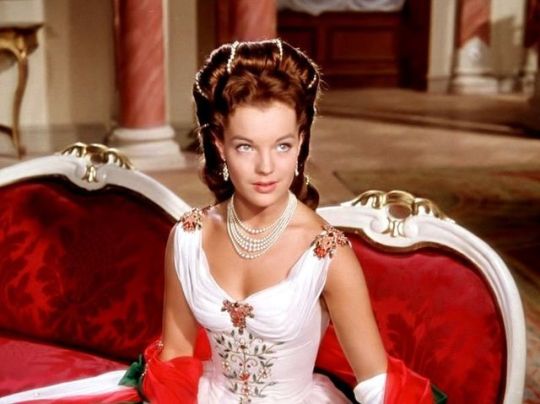
Sissi: Fateful Years of an Empress (1957, Austria)
In three years, Romy Schneider had become the face of Austrian cinema. Appearing as Empress Elisabeth (”Sissi”) of Austria as part of Ernst Marischka’s Sissi trilogy, she is, as always, luminous and gracious in the role that became hers. German-language media would, decades afterwards, sometimes refer to Schneider as “Sissi”. This final film – Sissi: Fateful Years of an Empress – is the least escapist in an otherwise popular, romanticized series that gave Austrians a source of cultural pride while trying to rebuild from the wreckage of World War II. It is also a solid summation of what Ernst Marischka wished to accomplish with these films: an opulent royal drama with enough good-natured humor to attract the widest possible audience. All three films are holiday season television traditions in German-speaking nations and elsewhere, even if the second and third never quite recapture the charm of the first. For Sissi: Fateful Years of an Empress, Marischka assembles his regular cast and crew one last time.
In Sissi: The Young Empress, we witnessed (anachronistically) as Sissi (Schneider) and Emperor Franz Joseph (Karlheinz Böhm) became King and Queen of Hungary, forming the Austro-Hungarian Empire. Court life is insufferable as usual, Franz Joseph’s mother Archduchess Sophie (Vilma Degischer) continues to dictate Sissi’s schedule, and Hungarian Count Andrássy (Walther Reyer) has confessed his love to Sissi. Scandalous! Much of the film concentrates on lingering tensions between Austrians and Hungarians (Sissi is more popular than Franz Joseph in Hungary, given that she has learned Hungarian), Sissi’s extended bout of tuberculosis and recovery in Madeira and Corfu, and ongoing Italian nationalist sentiment in Milan and Venice (at the time, both were possessions of Austria-Hungary).
The trilogy’s regular supporting cast of characters returns: Franz Joseph’s father Archduke Franz Karl (Erich Nikowitz); Sissi’s mother Duchess Ludovika (Magda Schneider, Romy’s mother); Sissi’s father Duke Max (Gustav Knuth); Sissi’s eldest sister Princess Helene (referred to as ”Néné”, Uta Franz); and the recently-promoted comic relief in Major Böckl (Josef Meinrad).
As always, there are historical inaccuracies abound. Sissi’s fight with tuberculosis, though often discussed among Austrians when recounting their history, is probably just an unfounded rumor. Her stay in Hungary’s Gödöllő Palace occurred after that rumored affliction, not before. Lastly, Sissi’s first daughter, Sophie, who appears in the concluding moments, passed away very young after Sissi had temporarily moved to Hungary.
The latter two Sissi films feel like episodes in an extended plot, rather than their own, independent pieces. This should be obvious, but an individual’s appreciation of the sequels is dependent in the familiarity of what has happened before. Almost all of the character development is seen through Sissi, while everyone else remains as they were when we were first introduced to them.
How unfortunate, many Sissi fans will remark, that Romy Schneider came to dislike the role of Sissi so much that she refused to reprise he role when made aware of plans for a fourth film. Indeed, she is the greatest aspect of all three films and she, more than anyone else attached to these projects, should be able to say when there is nothing more she can provide to the character (Romy’s mother, Magda, lobbied her daughter to agree to the fourth film). Perhaps the role of Sissi might not have been the most dramatically demanding role that any actress might ever encounter, but with this valedictory performance that ranges between personal confidence to royal exasperation to physical fragility, it is the most layered portrayal of Empress Elisabeth yet, even if it is not the most appealing. Schneider, after Sissi, sought to develop her talents under some of Europe’s most noted auteurs all while occasionally starring in Hollywood films. Schneider would make one final appearance as Empress Elisabeth in Luchino Visconti’s Ludwig (1972, Italy/France/West Germany), but that interpretation of Sissi – misanthropic, scheming – is unlike anything seen in Marischka’s trilogy.
For co-star Böhm (who is simply sufficient here), a promising career stalled with the critical and commercial failure of Michael Powell’s Peeping Tom (1960), in which Böhm stars as the film’s cinematographer/photographer/serial killer. The sexual themes of Peeping Tom poisoned Böhm’s appeal to film producers, although he would continue working until 1980. From 1981 onward, he and his wife concentrated almost entirely on humanitarian work in Ethiopia.
As he did for the previous films, Marischka also co-produced and wrote the screenplay himself. Moreso than Sissi and Sissi: The Young Empress, this film tackles European politics from its opening minutes. Marischka’s take on how Hungarians, Milanese, Venetians, and others viewed Austria-Hungary is portrayed through some of the rosiest tinted glasses one could possibly find – the harshest words for the Austrian royals are mild, soon won over by Sissi’s deference, beauty, and charm. The intensity of the Empire’s ethnic relations and political power plays are minimized, assuming Franz Joseph’s and Elisabeth’s inherent righteousness. She must, according to the ever-demanding Archduchess Sophie, be at his side in these political affairs, but do and say little. But Sissi is not the passive type, and she assists in the well-mannered, considerate ways that she can.
This is best exemplified in the scene where Sissi and Franz Joseph attend a production of La Traviata at La Scala, an esteemed Milanese opera house. As the royal couple are about to take their seats to the tune of “Kaiserhymne” (music by Joseph Hayden and lyrics by Lorenz Leopold Haschka; you may recognize the melody as the German national anthem). Midway through the Austrian anthem, the orchestra abruptly switches to “The Chorus of the Hebrew Slaves” from Verdi’s opera Nabucco; the Italian nationalists in the audience stand up, backs towards the Emperor and Empress, singing in unison. Instead of leaving the opera (as others might have done) during this act of defiance, Sissi wants to hear the nationalists out and applauds when the piece is finished. Stunned by her magnanimous applause, the Milanese – actually the servants of the nobles who were refused to show up – are heartened by the respect she has shown to their demonstration. From a musical standpoint, this Verdi chorus was used as a protest song in nineteenth-century Italy for those wishing to see a unified Italian state; its popular use in Italian society was probably not what Verdi was intending, but that is the reputation the composition garnered (a reputation advanced by this film).
As they have been throughout, those working on the film’s technical departments are doing tremendous work. Costume designers Leo Bei and Gerdago have spectacular uniforms, gowns, dresses, and suits in every single moment of this film. Composer Anton Profes returns with Sissi’s violin-heavy leitmotif repeated across the trilogy. Production designer Fritz Jüptner-Jonstorff carries over much of his incredible work recreating dance halls and imperial palace hallways and rooms when Sissi is in Austria. Nowhere does it confirm or deny that the production shot at La Scala, so I cannot credit Jüptner-Jonstorff with what might be a fantastic reproduction of the terraced seating of the music hall. Cinematographer Bruno Mondi, hamstrung by all the interiors in the second film, is once more confined to imperial quarters. But the final sequence in Venice, utilizing the enormity of Piazza San Marco, is appropriately epic in scope and beautifully framed to conclude three years of a landmark in Austrian cinema.
The Sissi trilogy never appeared in their original theatrical cuts in the United States. Some years after, Paramount purchased the rights to distribute Sissi to American cinemas, but decided to splice the three films together into an abridged version. That version is Forever My Love (1962), and it is not recommended for any viewers interested in watching the Sissi films.
For an Austria just beginning to reassert its autonomy after years of destruction and desolation, the Sissi series offered respite from economic and political woes and a celebration of being Austrian. Some detailed parts of the storytelling and cultural references will escape the detection, the understanding of many. What remains for all to see is an amiable trilogy where a princess become and Empress, where a young girl accepts the duties of her public position and become a unifying force for a nation of different, conflicting peoples. Where Sissi is beginning to understand the desires and fears of the non-Austrians in the empire and the practices of the imperial family, she never loses her indispensable empathy for others. For all those who may see these films and even for those who see these works as sugary fictions, may we learn and live by that example.
My rating: 7/10
^ Based on my personal imdb rating. My interpretation of that ratings system can be found here.
Also in the Sissi trilogy: Sissi (1955) and Sissi: The Young Empress (1956)
#Sissi#Sissi: Fateful Years of an Empress#Ernst Marischka#Romy Schneider#Karlheinz Bohm#Magda Schneider#Gustav Knuth#Josef Meinrad#Erich Nikowitz#Uta Franz#Walther Reyer#Peter Neusser#Bruno Mondi#Fritz Juptner Jonstorff#Gerdago#Leo Bei#Anton Profes#TCM#My Movie Odyssey
10 notes
·
View notes